POPEYES, 50 YEARS YOUNG











































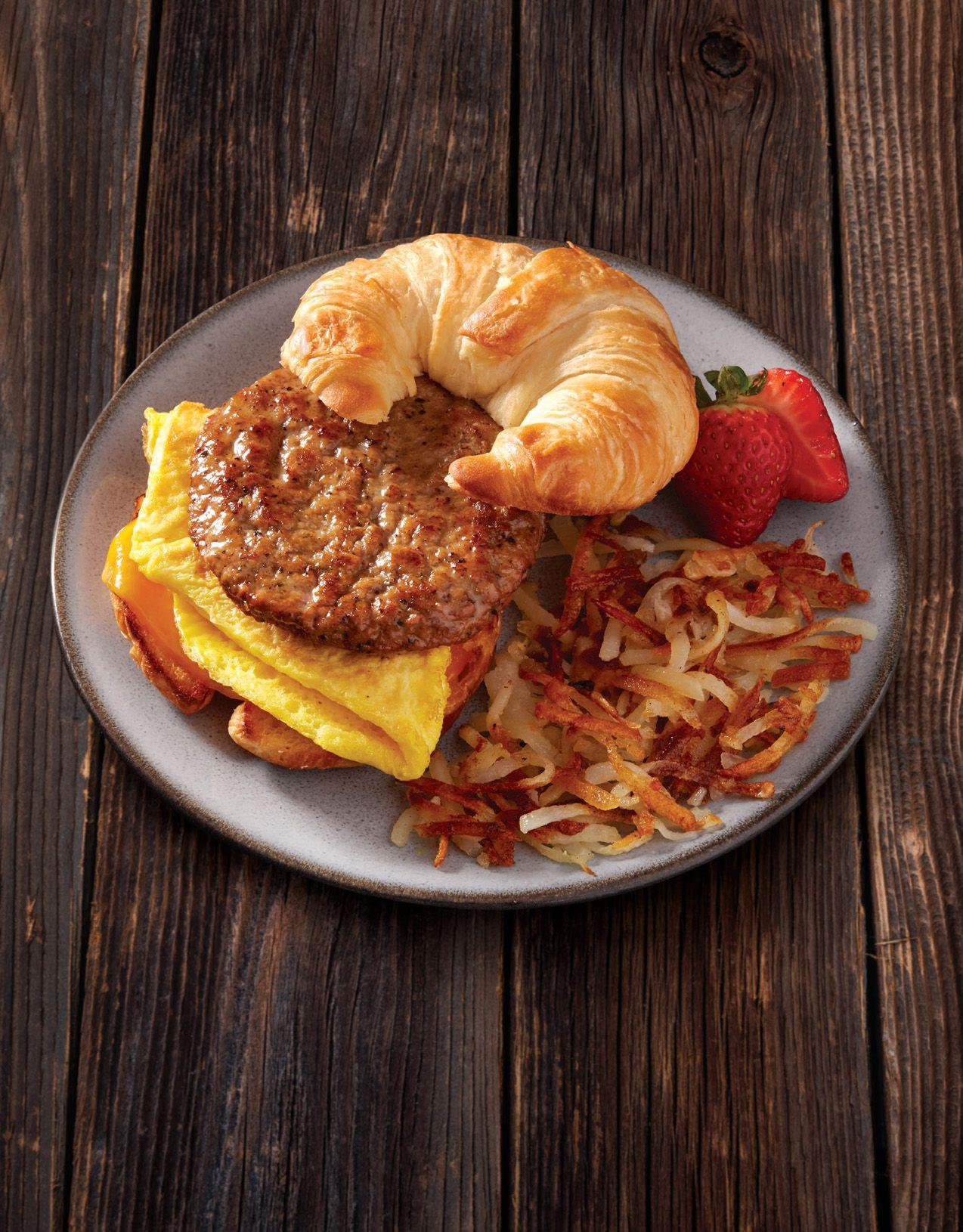




















The Massive Cost Restaurant Franchisees Can’t
SPONSORED
28 In




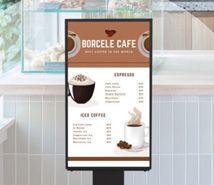

EDITORIAL
EDITORIAL DIRECTOR, FOOD NEWS MEDIA: Danny Klein danny@qsrmagazine.com
MANAGING EDITOR, FOOD NEWS MEDIA: Nicole Duncan nicole@qsrmagazine.com
DIRECTOR OF CUSTOM CONTENT: Peggy Carouthers peggy@qsrmagazine.com
CUSTOM CONTENT ASSOCIATE EDITOR: Charlie Pogacar charlie@qsrmagazine.com
CUSTOM CONTENT ASSOCIATE EDITOR: Kara Phelps kara@qsrmagazine.com
CONTENT EDITOR: Ben Coley ben@qsrmagazine.com
STAFF WRITER: Trevor Griner Trevor@qsrmagazine.com
ART & PRODUCTION
ART DIRECTOR: Tory Bartelt tory@qsrmagazine.com
ONLINE ART DIRECTOR: Kathryn “Rosie” Rosenbrock rosie@qsrmagazine.com
GRAPHIC DESIGNER: Erica Naftolowitz erica@qsrmagazine.com
PRODUCTION MANAGER: Mitch Avery mitch@qsrmagazine.com
ADVERTISING
800.662.4834
NATIONAL SALES DIRECTOR // EXTENSION 126 : Eugene Drezner eugene@foodnewsmedia.com


NATIONAL SALES MANAGER // EXTENSION 149 : Edward Richards edward@foodnewsmedia.com
NATIONAL SALES MANAGER // EXTENSION 141 : Amber Dobsovic amber@foodnewsmedia.com
NATIONAL SALES MANAGER // EXTENSION 148 : John Krueger john@foodnewsmedia.com

SALES SUPPORT // EXTENSION 124 : Tracy Doubts tracy@foodnewsmedia.com
CIRCULATION WWW.QSRMAGAZINE.COM/SUBSCRIBE
CIRCULATION COORDINATOR: N. Weber circasst@qsrmagazine.com
ADMINISTRATION
GROUP PUBLISHER, FOOD NEWS MEDIA: Greg Sanders greg@foodnewsmedia.com
PRESIDENT: Webb C. Howell
MANAGER, IT SERVICES: Jason Purdy
ACCOUNTING ASSOCIATE: Carole Ogan
ADMINISTRATION
800.662.4834, www.qsrmagazine.com/subscribe
QSR is provided without charge upon request to individuals residing in the U.S. meeting subscription criteria as set forth by the publisher.

REPRINTS
THE YGS GROUP TOLL FREE: 800.290.5460
FAX: 717.825.2150
E-MAIL: qsrmagazine@theygsgroup.com www.qsrmagazine.com/reprints
Sponsored content in this magazine is provided by the represented company for a fee. Such content is written to be informational and non-promotional. Comments welcomed. Direct to sponsoredcontent@foodnewsmedia.com FOOD NEWS





Within a few months of being hired, I found myself at a table with three vaunted restaurant journalists. It was a fall Maine night and the host was taking coats. A fireplace glowed the entry. And then, I asked for a glass of rosé. Years later, our managing editor, Nicole Duncan, still tells this story to fresh employees. How at a restaurant that felt cozier than a Hallmark movie, I ordered pink wine. To be fair, for starters, I have no regrets. Rosé is never a bad choice. Yet truthfully, I just pointed to something that sounded “wine-y” and hoped for the best. I was a Brooklyn, New York, kid who had just spent a decade writing about high school football in Florida. My parents didn’t drink alcohol and the first meal I ever made for my wife was the beef stroganoff version of Hamburger Helper (she, too, often brings this up). I was trying to fit into a sphere I wasn’t even aware of.

This story, as glib as it might be, came to mind recently when my colleague, Ben Coley, was booking his flight to Chicago for the National Restaurant Association Show. We hired Ben in January 2020. So, as the calendar portends, he wasn’t going on any work trips anytime soon. It made me realize what he’s missed—the kind of interactions you can’t punch a time card for.
In the grand scheme of COVID, not being able to travel for a trade show feels miniscule. And it is. Ben and I communicated via screen for roughly a year as the industry faced the crisis from the tip of the spear. By the time we met again, it felt like decades had passed. I’m sure you all
can relate. I had gray hair and acted twice my age before. Now, it was (more or less) closer to reality. As the world recovers, however, so are events and the connective threads we seek out from face-to-face opportunities. We’re one step further on the road back to normal, or whatever that might be. And I’m happy Ben gets to see it; to meet with the people he’s been talking to on the phone/Zoom for two-plus years; to gather insights and feedback from the trenches; and yes, the moment to embarrass himself in front of grizzled vino vets if he gets the chance.
This recalibration is important for restaurants. Maybe more so than other industries. It’s been unnatural, and definitely out of character, for so many leaders I’ve spoken to in past months to huddle at home and try to flip the right switches. Hospitality is a universe where no matter what tech you invest in and how streamlined systems become, you simply can’t recreate the view from the front door. As Eggs Up Grill CEO Ricky Richardson once told me, “what you can’t ever defeat is what you see inside your restaurant.” The same is true of colleagues. So let the conversations flow at the industry’s biggest show, and come find us at our table to say hello if you’re attending. Just, whatever you do, don’t bring me the wine list.
Danny Klein, Editorial Director






The National Restaurant Association Show provides an opportunity to reconnect again, and brings us that much closer to life as we remember it.
47%

of lapsed customers say more variety of hot & cold specialty coffees and new brewed coffee options would entice them to increase food and beverage purchases at breakfast.

Whether you’re a quick-service coffee destination or full-service restaurant with a breakfast program, Mother Parkers is here to partner on your tea and coffee needs through:
• Blend & Product Development

• Insights to Drive Growth
• Surety of Supply

Get in touch with us online mother-parkers.com/contact-us to learn how we can help!

Find out more about our coffee and tea programs by visiting us at www.mother-parkers.com




















Honey bees are responsible for one in every three bites of food we eat, thanks to their pollination efforts. That includes the fresh lavender and blueberries in this delectable syrup. As an added bonus, honey bees produce pure, all-natural honey as part of the process. For this and other delicious recipes brought to you by bees, visit Honey.com.







SONIC DRIVE-IN CLAIMS IT HAS A SLUSH FLAVOR for “everyone and for every mood.” Now, it’s taking the guesswork out of the equation for consumers. The chain dropped a “Sonic Slush Ring” in March, which is designed to look like a Slush in one of the brand’s signature white cups. But they’re more than just design pieces; each ring comes with a guide that matches the indicated ring color to the “perfect Slush flavor to suit your mood,” the company says. If the ring turns purple, for example, a grape Slush might be in order. Pink? Try Strawberry. “Everything Y2K is on trend right now, and the Sonic Slush Ring lets us tap into that style in a fun way that’s uniquely Sonic,” says Lori Abou Habib, the brand’s chief marketing officer.
The Slush Rings sold for $9.99 online. Guests could also purchase canvas tote bags and T-shirts that read “My Slush Mood.” For every Slush Ring sold, Sonic donated all of the proceeds to supplies and learning resources for public schools.
 What kind of Slush are you in the mood for? Sonic has the answer.
What kind of Slush are you in the mood for? Sonic has the answer.
The classic chain’s latest launch tapped into just the right amount of nostalgia.









It remains to be seen just how many locations will close during the pandemic era. Estimates in the 100,000 range feel like a good benchmark, but the dust continues to settle. However, the industry has progressed far enough to ask another question—who is ready to scale again?
Bank of America’s global research division released a report looking into the subject. Here were some highlights.
The overall reality:


While the pandemic wreaked havoc with the profitability of smaller restaurant operators, it proved beneficiary for large restaurant chains, particularly traditional fast-food restaurants.
For many quick-serves, average volumes are higher than pre-COVID, 10 percent across the board per BofA’s index. Along with lean labor models, many brands drove unit-level cash flows to all-time highs.
Examples:
“I’m excited to share that over the long-term we now believe we can operate at least 7,000 Chipotle restaurants in North America, up from our prior goal of 6,000 based on the success of small-town opportunities that are delivering unit economics at or better than our traditional locations.”
CHIPOTLE CEO BRIAN NICCOL









“ We now believe that our domestic footprint can scale to 4,000 restaurants [from 3,000 previously], and maintain our position for 3,000 international restaurants. That’s a potential of 7,000-plus total restaurants.”
FORMER WINGSTOP CEO CHARLIE MORRISON
“In 2021, we opened 3,057 net new units, driven by 4,180 gross unit openings, with meaningful contributions from each of our brands, marking the strongest growth year in our history and setting an industry record for unit development. To put that into context, as the world’s largest restaurant company, we opened a new restaurant on average every two hours.” YUM! BRANDS CEO
 DAVID GIBBS
DAVID GIBBS
“Despite the exit of independents and smaller restaurant concepts, demand for the best real estate sites remains fierce,” BofA said. “In general, the concepts that closed during the pandemic had occupied subpar locations [a contributing factor to closures] and or pads that were too small for large chains. They also
may have lacked the capacity to accommodate the [double] drive-thru lanes or curbside pickup areas that became so integral to restaurant operations during the pandemic.”
Some historic concerns:
“While many large restaurant systems have emerged healthier from the pandemic accelerating growth is not without risk,” the company added. “Historically there has been an inverse relationship between unit growth and same-store sales for mature concepts as they risk cannibalizing their own existing operations. And in some cases, excess growth has precipitated the sharp declines in performance that necessitate turnarounds [which invariably include slowing or stopping unit growth].”
Brands to Watch:






BofA added while excess growth can stir setbacks for mature concepts, brands far from saturation are insulated from cannibalization and new stores propel not only top-line growth, but also the ability to scale up and leverage costs. Restaurants with significant whitespace and exceptional unit economics (Dutch Bros, First Watch, Krispy Kreme, Portillo’s and even Starbucks), have earned the “right to grow,” the company said. Dutch Bros has the added advantage of small boxes/plots of lands that can thrive in lower cost locations. Indeed, In the first year of being a public brand, Dutch Bros opened a record-breaking 98 stores systemwide, surpassing previous guidance of 92 units. This year, it expects at least 125 openings, or growth of roughly 23 percent.






Getting drive-thru operations right is critical, even more so in the current environment. “Right now, our top focus in our stores is on growing top line sales through drive-thru execution, with an emphasis on late-night operations,” Aiello says. “A lot of companies took a natural sales lift during the pandemic just because there were more consumers in general going through drive thrus, but to maintain it and to realize the true potential, you’ve got to have consistently outstanding operations.”
As Flynn Restaurant Group refocuses on meeting high demand at the drive thru, data is one main prong of its approach. The company holds weekly engagement calls with its store managers and area coaches to review outlier reports from Envysion Restaurant Solution Suite, a video surveillance and loss prevention software solution that ties reporting to video verification. The outlier reports show video footage and transaction data side-by-side, providing insights and context to dig deeper into the numbers.
“We get to have a good conversation every week about where the opportunities are, and that’s been really helpful,” Aiello says.
During the worst phases of COVID-19, a case could be made that drive thrus saved the quick-service restaurant industry. When dining rooms closed, drive thrus shouldered most of the revenue intake for many chains—and that trend shows no signs of stopping anytime soon.
“The increase in the percentage of drive-thru sales, pre-pandemic versus now, has been absolutely remarkable—not only for our company and our brand, but for the industry as a whole,” says Jon Aiello, market president with Flynn Restaurant Group. “The drive thru is the lifeblood of quick-service restaurants right now, and I feel like that change is here to stay. Companies that are able to operate drive thrus that are extremely efficient, extremely accurate, and friendly will have the advantage.”

Flynn Restaurant Group originally chose Envysion to help mitigate business risk. Beyond helping to reduce loss prevention, the platform has also proved valuable in other ways. “Initially, when we started with Envysion, our biggest gain was obviously loss prevention,” Aiello says. “The platform helped us see where we were missing the boat in terms of refunds, voids, promos—things going on that maybe shouldn’t be going on. But a hidden benefit that we’ve discovered along the way has been the operational improvements we’ve been able to make, just through the normal course of engaging with the videos and engaging with the outlier reports. We’ve become better as an organization as a result of it.”
Envysion has allowed Flynn Restaurant Group to identify key areas of their drive-thru operations and make measurable differences over time. “Everybody has more on their plate, and no one has time to watch video all day,” Aiello says. “Envysion integrates a high-tech video surveillance system into our POS and gives us real-time data. In five or 10 minutes over coffee, you’re able to identify where your pain points are—not only in terms of loss prevention, but also in terms of operational deficiencies. You’re able to go and address those immediately instead of being buried in a computer all day. It’s been a huge help to us.”
To learn more, visit envysion.com.
To take drive-thru operations to the next level, operators need to focus on what the data reveals.
/BY KARA PHELPS
“Companies that are able to operate drive thrus that are extremely efficient, extremely accurate, and friendly will have the advantage.”


























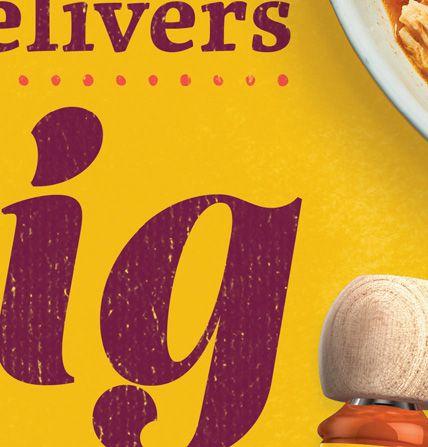










Restaurant operators of late find themselves in a precarious position few have experienced: trying to figure out the best methods to price their menus amid a range of inflationary pressures.
The nation hasn’t experienced this level of inflation in 40 years, and, even then, restaurant operators were nowhere close to witnessing the type of labor shortages that are now joining with various supply issues to exacerbate more typical cost stresses, like rising energy prices.
“Pricing is really coming to the forefront,” says Tom Cook, principal at Westport, Connecticut-based restaurant consulting firm King-Casey. “Now, it’s not only the cost of goods that are going up, but the cost of labor that these operators have to face.”
Restaurants began encountering some of these concerns even before the economic turmoil created in the wake of COVID-
19. Ingredient shortages over the years forced changes in menus and recipes, while labor concerns started appearing several years before the pandemic.
Unlike the past, however, when owners could focus on one issue at a time, “this is occurring on a massive scale that has people thinking of it in a separate way,” says Dirk Izzo, senior vice president and general manager at NCR Hospitality, which provides fiscal technology solutions.
There’s no doubt inflation has impacted what the consumer pays at limited-service restaurants. According to the U.S. Bureau of Labor Statistics, prices for meals and snacks at these eateries jumped 7.2 percent for the 12 months ending in March.
The BLS estimates overall food prices could rise another 4 percent in 2022.
“For the majority of operators, it will be very difficult to avoid




seen in decades.
/BY BARNEY WOLF
raising prices, if not this year, then the next,” adds Maeve Webster, president of Vermont-based Menu Matters, a menu and strategic consulting firm. The issue then becomes, can quick-serves do so and not alienate customers?
Thus far, most experts suggest the best menu-pricing philosophy may to be to refrain from across-the-board or frequent price hikes, instead choosing more strategic increases. At the same time, they say guests have been largely tolerant of restaurateurs’ need to escalate prices.
“People have been more understanding than they’ve ever been,” says Jim Balis, managing director, Strategic Operations Group for CapitalSpring, which provides structured financing for the restaurant industry. Consumers are even willing to tip at fastcasual and quick-service units.
Observers also note some restaurants are making portions smaller as opposed to raising pricing multiple times, although that tactic is just as visible to customers as raising prices.
The trick going forward, as Webster suggests, is pricing menus in a way that will address the various cost increases facing operators without turning off so-far patient customers. And experts agree the key is a balancing act to protect margins without being hidebound.
“Operators need to be more flexible in terms of profit-margin objectives,” Cook says, admitting that’s easier said than done. While maintaining margins is the goal, eventually those may need to be relaxed or customers will feel exploited.
He suggests a three-pronged restaurant menu-pricing strategy that focuses on controlling costs—including through kitchen
tain items “have very good price value, so guests realize the price increase is not going to be a showstopper,” Cook says. Alerting guests to items with perceived value is just as important.
Izzo echoed the call to use technology advances to offset labor cost pressures, ranging from separate make-lines for digital orders in the kitchen to kiosks and QR code contactless ordering in the lobby. And “bots” can take orders in drive-thru lanes.
He is another proponent of gathering data to help make good menu pricing decisions, not only which items—particularly highprofit ones—can carry price increases, but also how to market those as value propositions.
“Every restaurant is trying to figure out the elasticity on price and how much of an increase it can take without losing customers,” he says. “Data will help. You must realize your costs and understand your customers and their requirements. Determining that sweet spot is important.”
Any pricing strategy should consider a discounting plan where it makes sense, Balis says, such as pricing a premium, limited-time offer higher but also offering it as part of a discount concept, such as a bundle—making sure all of those maintain acceptable margins.
After considering specific menu pricing, “the next step is to look at the revenue channel,” he says. “You may want to price differently across the channels,” such as charging separately mobile or drive-thru service than for dining in.
With an investment portfolio that covers some 3,000 restaurants, mostly limited-service, CapitalSpring works with all kinds of owners—chains, franchises, and independents. While some are adamant on certain pricing issues, others are more flexible toward regional pressures.
“A lot of times the brand will give you liberty on pricing, but, say, if there’s an LTO, you have to abide by their pricing,” Balis says.
Webster advises operators to be honest with customers, but refrain from countless price hikes, because guests “will lack confidence” in the brand. “They won’t know what to expect in terms of what they may be paying.”
The pandemic also has changed the way people view a value proposition. “It’s not so much the cost, but what am I getting for it,” she says. Value can be enhanced not just by low prices or deep discounts, but by other factors, including hospitality, loyalty benefits, and ease of ordering.
technology advances; ramping up data collection related to pricing and value; and communicating a brand’s value to guests.
Taking a “deep dive” of transactional data over recent years will provide necessary quantitative information, he adds, and an analysis of consumers’ attitudes regarding the value of products will let an operator know if an item has a “good perceived value and a chance to do a price increase.”
Having data also allows restaurants to let consumers know cer-
While automation can save costs, hospitality is still important, including at limited-service restaurants. Several experts pointed to the Chick-fil-A’s success with stationing friendly employees in its drive-thru lanes to take face-to-face orders, a tactic some others followed.
“It’s demonstrating that you appreciate guests when they visit,” Webster adds. She cautions against relying so much on technology that it removes the human touch. “Otherwise, you are nothing more than a higher-level vending machine.” q









before pickup without opening the lid and releasing the foods’ heat. PP excels here as reusable and remains recyclable after use.


Better packaging is an investment in protecting customer acquisition costs and securing the next order. It is also something consumers value. 58% of all adults say they’d be willing to pay a little more for upgraded packaging. This number jumps to over 70% for those that choose takeout and delivery most – consumers 18 to 41 (Gen Z adults and Millennials). A 2% premium on the order price will cover the increased investment in packaging for most operators.

their daily lives. Consider this: 54% of consumers report it is essential to the way they live, and over 60% say they will order more takeout and delivery in 2022 – a number that leaps over 70% for consumers 18 to 41 years old. Yet, Datassential found only 1 in 3 consumers feel takeout and delivery food quality has improved. Restaurants delivering the best meal experiences will win. Better packaging converts this opportunity into loyal growth.



After a takeout or delivery meal is packaged, the clock begins on preserving the meal experience. An average of 30-minutes pass as food waits for pickup, travels, and is brought to the table. Over that time, the meal must stay warm, delicate textures must remain crisp and presentation must be preserved. Test packaging on this timeframe, in a simulated delivery process, to identify the packages that perform best.
Polypropylene (PP) packages excel at holding heat. But for hot and crisp favorites, like breaded chicken or fries, the moisture this heat creates must be vented. Technomic consumer research found Crisp Food Technologies® was best at venting excess humidity to protect texture while retaining heat - even over 30 minutes. Because food stayed hot and crispy, consumers experienced better taste.
Alternatively, for rich and saucy meals, sturdy, compartmented packages with leakresistant closures prevent messy spills while retaining heat and keeping proteins and sides separated. Clear, anti-fog lids reduce









Improved packaging pays additional
through delivery or takeout? Packages that protect the meal experience longer enable their menu over a larger delivery radius. Better meals reduce costly comps for selected geometries convey larger servings while supporting portion control, enabling slight item quantity reductions to lower food costs and maintain or even improve
Better packaging is your key to unlocking delivering the best experience.




location within minutes. Designed to be userfriendly with a straightforward setup process, the platform can create detailed estimates for projects within a few minutes, compared to the two weeks it may typically take to generate bids the traditional way.
“Pretty much everything is on-demand,” Borisov says. “But in construction, if a project comes in 15–20 percent over budget and it takes the contractor four weeks longer than anticipated, that’s very typical. This has become the norm in franchising, in fact, where projects are late. Franchisees aren’t happy about that.”
Since BidVita eases some of the most common frustrations that franchisees experience, the platform can also help maintain positive franchisee-franchisor relationships.

When it comes to opening a new restaurant franchise, the biggest price tag is construction, especially in today’s market. But new franchisees often learn that obtaining a realistic estimate for construction costs is usually impossible until late in the process, which in most cases is too late, because the upfront commitment to cost is already made. Even franchise disclosure documents (fdds) reference a broad potential range.
This uncertainty isn’t ideal for franchisees, many of whom entered franchising to mitigate their risk as much as possible. One of the benefits of franchising is buying into an established system with no surprises, but the largest cost involved is often the least known upfront.
“If you are in franchising, construction can make up 60–70 percent of the cost of your entire project,” says Slava Borisov, CEO of
BidVita. “Like any large investment, you need data to be able to make an informed decision. Everything else in the franchise system is known with 10–15 percent deviation, but for construction, you’re given a range that in some cases is up to 10 times the lowest cost. That can be massively frustrating to franchisees.”
BidVita is a platform designed for franchises’ commercial construction that uses artificial intelligence (ai) to check construction costs, timelines, milestones, and qualifications in real time all over the U.S. and deliver more precise data without needing input from a contractor. Franchisors can use BidVita to increase royalties and decrease timelines to opening by an average of four months, and franchisees are happier knowing their costs, timelines, and milestones in the early phase of development and compare the construction costs for their
“The biggest issue in franchising is franchisee unhappiness,” Borisov says. “If franchisees are unhappy, the brand isn’t going to get referrals. Most of that friction happens during the franchise development process, when franchisees are in the market for real estate locations or making sure they sign a good lease. They need data points to work with their biggest investment. Even without construction plans, BidVita can tell them what a location is going to cost, how long it’s going to take to develop, what’s included and excluded, and the major milestones on that project. If they’re negotiating a lease, BidVita can tell them whether they have an appropriate tenant improvement allowance or if the landlord is not willing to upgrade the space. Franchisees or their real estate agents can learn all of this from their phone in less than six minutes.”
Time and foreknowledge can make a big difference. “We give our franchisees and franchisors a glimpse into the future with technology,” Borisov says. “The data our platform provides can help you see the finish line during all project phases.”

 BY BEN COLEY
BY BEN COLEY
Since, Southern Grounds expanded to four locations throughout Florida, including its first nontraditional unit in the Jacksonville International Airport in partnership with HMSHost. To kick off 2022, the brand announced the beginning of its franchise program, with the goal of reaching 125 stores in the next decade.

“We wanted social consciousness to persist in our brand over low prices, poor quality, and the standard mix of flavors you would get in traditional coffeehouses. So, increasing both food and coffee quality was important in this new paradigm for us,” Janasik says. “Those were the things we were chasing in this new model. New coffeehouse and community focus lead to new energy in the communities, gentrification of sorts, and we wanted food and coffee to be spoken equally in the same sentence when consumers came to experience us.”
FOUNDERS: Mark Janasik & Shiju Zacharia
HEADQUARTERS: Jacksonville, Florida
YEAR STARTED: 2016
ANNUAL SALES: $6.3M company-owned shops; $2.1M AUV
TOTAL UNITS: 4
FRANCHISED UNITS: Licensing agreement with HMSHOST for two locations. One is currently open in the Jacksonville International Airport Terminal A, and a second location will open pre-security tentatively in Q4.
WHEN MARK JANASIK AND HIS TEAM ENVISIONED the opening of Southern Grounds seven years ago, they were advised against entering an already crowded coffee shop sector. But from their perspective, they had
studied big-time coffee brands and noticed a standardized experience that didn’t follow through on the promise of building community, which is an integral part of the movement, Janasik says.
Southern Grounds wanted to rebuild that gathering place and disrupt the way customers experienced their morning beverage. The best way to do so? Combine sustainably sourced food with a coffee bar to carve out an elevated, differentiated category.
The concept recruited local chefs to create scratch-kitchen recipes, learned from coffee roasting company Intelligentsia on how to form equitable trading relationships with farmers, and teamed with local artists and architects to deliver designs that reflect the aesthetics, color, and artwork of the neighborhood.
The restaurant features a sizable food menu featuring breakfast and brunch, hot items, tartines ( French open-faced sandwiches), cold sandwiches and wraps, salads and soups, and a kid’s menu. Some examples include Greek omelette, grilled goat cheese, salmon tacos, salmon toast, turkey club, and caprese salad.
The beverage lineup comprises cold brew, drip coffee, cappuccino, cafe con leche, chai latte, French press, and more. The typical menu mix is 55 percent food and 45 percent beverage.
The sustainable and non-GMO menu feeds into a growing trend among restaurant consumers. Thirty-eight percent of adults said availability of locally sourced food would make them more likely to choose one restaurant over the other, according to The National Restaurant Association’s 2022 State of the Industry. The sentiment is even higher among Gen Z (40 percent) and millennials (48 percent).
At the biggest cof-














The dish that got chef Steve Chu from hot dog cart to full-fledged restaurant: Thai Chicken Meatballs. It’s got a little bit of everything – crisp mango slaw, tender, juicy chicken meatballs and of course, that phenomenal bite and texture of Cracked Black Pepper. Your Skills. Our Spices. Now that’s a potent combination. Learn more at: McCormickForChefs.com/McCormick-Culinary

TOGETHER, WE FLAVOR






Bank branch numbers have been on a steady decline for the last few years, but the trend has only picked up speed since the COVID-19 pandemic began. A report from S&P Global found that more than 2,900 branches closed in 2021 alone. As consumers grew less comfortable with in-person interactions during the pandemic, they started using online and mobile banking apps much more. And as mergers and acquisitions (M&A) have increased to the highest levels since 2006, banks have closed duplicate branches within a 10-mile radius. These combined forces have led to noticeably higher bank branch closures in every part of the country, from cities to rural areas.
So, how do these closures affect quick-service restaurant operators? Several common issues tend to arise.
“The biggest impact to restaurants is that they now have to drive farther to make their bank deposit and to get their change order, so the employee is out of the restaurant longer,” says Lenny Evansek, senior vice president of national retail business development at Loomis. “Another side effect is that they need to open up new banking relationships, which means they now need to manage more of them. Also, banks are raising the fees on commercial deposits if those commercial-connected clients go into banking centers—so restaurants are now paying more to do over-the-counter banking. The cost of going to a bank branch has never been higher.”
As more and more bank branches close, operators are tasked with finding workarounds and new solutions to these problems. That might mean never going into a branch at all.
“Restaurants need to adopt a way to do more banking virtually,” Evansek says. “That is essential in today’s world. Loomis has a variety of solutions that can accommodate virtual deposits. We have the traditional armored car, where we just pick up and deliver deposits and
drop off a change order or use our smart safe technology solution called SafePoint. We also offer our own change order management platform called Loomis Cash Exchange, where clients can go online, place their change order, and then we deliver it. Many restaurants are starting to offer tip automation—our solution Kickfin can also send tips instantly to employees as soon as their shift ends.”
For operators who work in multiple states or regions, consolidating all of their banking activity into one vendor has distinct advantages. By simplifying to a single point of contact and implementing virtual deposits, operators can streamline processes and save employees’ time.
“Operators have a complete closed-loop system with Loomis,” Evansek says. “We differentiate ourselves by the high quality of the services we offer, our ability to implement solutions, and our ability to train effectively. We are the ones offering the safe; we manage the service and maintenance plan; we are our own armored car service. We offer automated tipping and change order management. As banking becomes more virtual, we can really become the one-stop-shop for operators for anything related to cash management within the four walls of a restaurant.”

›
›
›

























Pandemic conditions or not, some brands are racing to get franchise programs off the ground and capitalize on growth opportunities.
BY BRYAN REESMANattorneys at Nixon Peabody and our consultants at MSA Worldwide are awesome. They focus strictly on franchising, and they’ve been doing it for 20 or 30 years. They showed us the ropes. Without that expertise, we would probably have launched in 2027.”
Beyond the various state and federal regulations that come with franchising, H&H built out its entire operational training, manuals, and brand standards with cloud-based operations software firm Friend Connect that the franchisees access. “We’re 90 percent of the way through and have been working on it for over a year,” Rushin says. “It’s all that underlying infrastructure stuff that you don’t really think about that takes a long time to think through and build off of. So when you do sign your first deal you have everything ready and you’re not floundering around putting something together at the last second.”
Once a restaurant brand becomes well established on a local or regional level, the natural next step for many is to dive into franchising. It’s a step easier said than done, especially during a pandemic when many businesses halted shop and huddled up. But some endured and even thrived during the COVID-19 crisis, and are progressing with their first franchise plans. It’s served up new lessons of its own—franchising requires patience and purpose.
Iconic New York City brand H&H Bagels, which has five locations and turns 50 this year, saw its domestic shipping swell 500 percent and global wholesale increase 400 percent. H&H CEO Jay Rushin says the company became a better team and operator as a result. After five years of planning—during which he became very aware of their positive brand image after starting their global wholesale business—the company started franchising last fall, with four to six new units planned for 2022, and more accelerated growth in store for 2023.
“We probably launched it about as fast as you could, at least at the quality level we’re looking to achieve,” Rushin says. “Our
Miller’s Famous Sandwiches is another 50-year-old brand looking to the franchising space. Over the decades, it’s established roots as a top-notch roast beef destination at two Rhode Island locations, which never closed during the pandemic. The chain’s original 1,500-square-foot main unit in East Providence did nearly $2.4 million in sales last year.
Gwendolyn Graham, president of Miller’s Famous Sandwiches, has been with the brand since 2006. Her husband, Roger Miller Jr., VP and chief operating officer, came onboard fully in 2010 when the company opened its second location. He’s a third-generation operator. Both were asked if they wanted to continue the tradition. They previously worked in IT, and Gwendolyn in accounting as well, which has helped through the transition.
Like H&H, Miller’s is choosing slow, steady growth at first, seeking both first-time and experienced franchisees with passion for their brand. They are not looking to add multiple units at the start for the sake of revenue. As of press time, Miller’s was close to signing its first franchisee in southeastern Massachusetts, about 25 miles from the chain’s East Providence location, and was looking at tertiary markets outside Boston where interest is strong and the brand resonates.
“Systems are important in franchising—to make sure that those can be replicated and duplicated,” Graham says. “We’re processoriented people, and that’s what running a quick
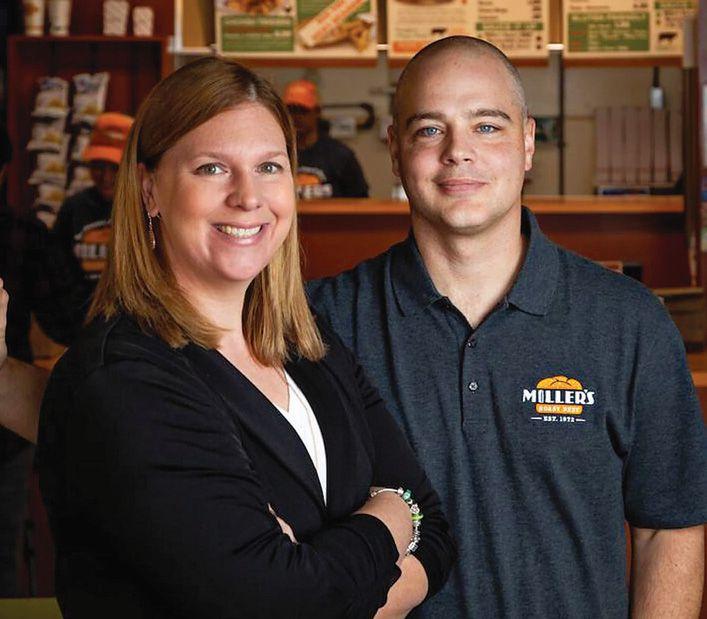

service brand in San Diego, Calif. “Integration between my headset and my drive-thru timer helps bring awareness to mobile order wait times and enables my team to make mobile customers a high priority so the customer doesn’t have to wait on us.”
Equally important, more restaurants want drive-thru communication systems that enable newer technologies like ordering via artificial intelligence (ai) “Many brands have been successfully testing automated ordering in the drive thru and have seen that it enables their teams to multi-task,” Foley says. “While the AI takes orders, employees are freed from order taking and empowered to enhance the customer experience with personable, face-to-face interactions when it matters most.”

Although brands have experimented for years with small tweaks to their traditional drive-thru service, the COVID-19 pandemic forced rapid innovation to better serve the higher traffic volume. While drive thrus made up as much of 70 percent of sales before COVID, the drive thru quickly became a lifeline for quick-service restaurants. As a result, operators invested in new technologies to help meet higher-than-ever customer expectations. Today, crews serve more customers than ever before at multiple touchpoints—dine-in, the drive thru, mobile orders, and curbside—and customers expect a fast, seamless experience with each order.
“The COVID pandemic forced us all to reevaluate and adjust our business operations,” says Paul Foley, president of HME Hospitality and Specialty Communications. “Drive thrus have evolved into operations with multiple order and pickup points. It’s no longer just about serving customers in the lane quickly and efficiently. It’s also about meeting service expectations at every additional channel like curbside pickup spots.”
To better serve customers, restaurants need a communication solution that seamlessly connects drive-thru and crew communication, plus provides critical insights in real time. “We want mobile order customers to have a fast and flawless experience just like they do in the drive thru,” says Lupe Cabrera, a general manager for a major quick-
The NEXEO | HDX Crew Communication Platform, created by HME, delivers on all these points. It features all-new high definition HDX Digital Audio, optional system integrations that provide critical performance alerts to the right person at the right time, supports tight integration to highly accurate automated order-taking (aot) systems, and is cloud-connected for platform upgrades to meet the ever-changing restaurant needs. Team members can use voice commands to perform certain tasks like immediately connecting to a drive-thru customer, connecting privately to a team member via headset for coaching, and more. NEXEO also allows one-on-one calls and segments crews into groups for more efficient operations, all without disrupting drivethru communication with customers.
“Delivering a great customer experience starts with making key communication easy and fun throughout the restaurant while maximizing efficiency,” Foley says. “NEXEO | HDX is specifically created to be the total restaurant communication solution for today and tomorrow, elevating your operation to exceed your customers’ expectations and enable future changes in the rapidly evolving quick-service restaurant industry.”
To learn more, visit hme.com/nexeo.
Quick-service teams are looking for communication tech that can help meet higher-than-ever customer demand and expectations.
NEXEO | HDX enhances the drive-thru with all-new and unmatched HDX Digital Audio, increases efficiency with its capability for multiple crew conversations at the same time, enables seamless automated order taking, improves workflows with hands-free voice commands, and more. NEXEO is the unrivaled total solution, maximizing productivity and exceeding expectations across key areas of your restaurant. The Fully Digital Solution for Drive-Thru and Beyond 866.577.6721 | www.hme.com/nexeo














































With custom programming, one-touch operation and precision performance, Vitamix® machines empower employees to achieve perfectly consistent results every time – even the first time. It’s just one reason we’re the industry’s most trusted blending partner.
See what else sets us apart at VITAMIX.COM/OURDIFFERENCE

Brand president Sami Siddiqui likes to say Popeyes is “50 years young.” While that might sound like something people profess at a weekend barbecue, there’s real weight behind it.
In the five decades since Alvin C. Copeland Sr. opened “Chicken on the Run” in the New Orleans suburb of Arabi, an area with just over 4,500 residents as of 2020, you could argue no three-year stretch has been more active or formative for the legacy brand. Perhaps only Copeland’s decision, after several months of tepid sales, to reopen the restaurant as “Popeyes”—named after Popeye Doyle from the 1971 film “The French Connection”—and switch from











Southern-fried chicken to spicy, New Orleans style, compares.
And this time, everything started by breaking the internet, Siddiqui says.
For two years, chefs in Popeyes’ Miami test kitchen quietly developed a buttermilk batter and tracked down a special flour to create a crunchy texture intended for a chicken sandwich. It used the same buttery topping found on biscuits to coat the bun and cut barrel-cured pickles thicker than competitors’.


Popeyes’ brass knew they were sitting on the biggest product launch in 30 years. Yet could the chain create buzz to match it?
By now, few customers, industry pundits, or anybody on
the grid, isn’t familiar with what came next. Popeyes sparked a social media battle with Chick-fil-A in August 2019 and the sandwich sold out in two weeks. The brand moved as many in 14 days as it expected to from August to September. According to mobile location analytics platform Placer.ai, traffic to Popeyes branches nationwide on August 20 and 21, rose a staggering 67.6 and 103.3 percent, respectively, above the company’s summer baseline. Placer.ai summed it up simply: “This is an outrageously high peak.”
Apex Marketing Group estimated Popeyes garnered $23 million in equivalent ad value across digital, print, social, TV, and radio in just the first 11 days (this number would eventually get to $65 million). More than 16 tweets per minute were fired off during the first month. Some restaurants sold 1,000 chicken sandwiches per day. Ad Age said Popeyes’ Chick-filA tweet earned more than 20 billion impressions worth some $220 million. Before the year closed, Popeyes more than doubled its Twitter following and generated enough word-of-mouth momentum to cancel an ad campaign scheduled for Labor Day.
What’s less known, however, is the effort actually began with a phone call. Kim Sánchez, owner of Sweet Dixie Kitchen, a trendy brunch spot in Long Beach, California, thought Popeyes was ringing to let her know she was being sued. In 2017, the restaurant grabbed notorious headlines when it got caught serving Popeyes chicken and presenting it as its own. Sánchez was






even spotted walking through the front door with Popeyes bags.
But Popeyes wasn’t threatening legal action. In a move that would come to illustrate the chain’s stance on the subject, it asked Sweet Dixie Kitchen to introduce the product. The idea being, “we promise our new sandwich is worth the visit.”
That was always the meat inside the bun, so to speak. Take a taste test and see who comes out on top. Over the next two years, the same company line darted in from every corner of the industry. Zaxby’s, McDonald’s, even Taco Bell (if you consider a “Sandwich Taco” a sandwich) created new offerings to enter the so-called “Chicken Sandwich Wars.” And it always came back to Popeyes.
By February 2021, the company revealed one of the more eye-popping statistics in quick-service history: From pre-chicken sandwich to present, average-unit volumes rose $400,000 to $1.8 million. Global crisis notwithstanding.
“I think what people often forget,” Siddiqui says, “is just a few months after the sandwich, COVID hit.”
From 2019 to 2020, Popeyes posted four of the best quarterly same-store sales increases in the quick-service industry over the last 10 years. One example—Q4 2019, when comps skyrocketed 37.9 percent.
Amy Alarcon, Popeyes VP of culinary innovation, who has

been with the brand since 2007, says the chicken sandwich “certainly changed the landscape for us internally as well.”
“We kind of instigated this shift where almost everyone in [quick service] suddenly changed how they were doing their chicken sandwich,” she says. “We like to think we set really high standards for ourselves and it was flattering that we established a standard for the industry.”
More recently, focus has turned to what Popeyes’ second act might look like. How can it leverage an indelible moment in fast-food history into something more lasting?


As the brand became, “quote end quote hot,” Siddiqui says, investor and franchisee demand popped across the globe. Prospective operators wanted in. Current ones wanted more. In fact, for many years, the brand didn’t have new franchisees entering the system. Today, there’s a waiting list, he says.
Siddiqui, formerly president of parent company Restaurant Brand International’s Asia-Pacific region before joining Popeyes in September 2020, led the launch of the brand in China and the Philippines. In both cases, he says, lines of four, five, even seven hours, snaked around openings. “I think part of that—much of that—is rooted in having an unbeatable product,” he says. “But also, a lot of the momentum we’ve seen here [in the U.S.].”
It’s a simple formula with wide-ranging implications: as Pop-

 POPEYES’ CHICKEN SANDWICH HAS SPAWNED NO SHORTAGE OF COPYCATS THROUGHOUT THE INDUSTRY.
POPEYES’ CHICKEN SANDWICH HAS SPAWNED NO SHORTAGE OF COPYCATS THROUGHOUT THE INDUSTRY.
















eyes turns 50, people are talking about the brand more than ever.
In 2021, it crossed the 3,000unit mark in the U.S. and Canada. Popeyes signed more development agreements around the world than at any other point in its history. It’s headed to India, the U.K., Saudi Arabia, Romania, France, South Korea, and, naturally, to more markets in the U.S., Mexico, and RBI’s Canadian base.

In guest surveys, which the brand hosts routinely, it asks consumers what their barriers to trial consideration for Popeyes are. “And what they always say is … actually convenience,” he says. “There’s just not a Popeyes close enough to me. And we think that is a huge opportunity.”
“I view that as my obligation—to build more Popeyes,” Siddiqui adds.

Just charting overseas, there are “a couple hundred” Popeyes in Asia today. Twenty-six percent of KFC’s total system sales stem from China alone. Yum!’s chicken giant has 26,934 restaurants, and only 3,953 of those are in the U.S.
“I think that highlights what the whitespace opportunity is out there,” Siddiqui says.
In many ways, Popeyes’ chicken sandwich gave RBI a trigger point it had been searching for in regard to the brand. On March 27, 2017, RBI acquired Popeyes for $1.8 billion. It was a significant move because it secured the Burger King and Tim Hortons owner (it now directs Firehouse Subs as well) a serious stake in chicken.
From acquisition to 2020, RBI posted cumulative net restaurant growth of 27 percent at Popeyes. As noted, 2021 represented the highest number of openings yet as the brand closed the calendar with 3,705 restaurants globally—a net of 254 stores, or unit growth of 7.4 percent. That total breaks down to 2,754 U.S. locations (net of 146 restaurants) and 951 international outlets (net of 108 restaurants).
“We’re just scratching the surface on opportunities for Popeyes,” RBI CEO Jose Cil said in February. “And I firmly believe that the brand is poised to become one of the fastest growing in the industry.”
Come year-end 2020, Popeyes exited as the country’s secondlargest chicken chain, just ahead of Chick-fil-A and about 1,300 units behind KFC. After Wingstop, which had more than 1,500 stores and continues to grow, recently upping its global target to 7,000 total stores, Church’s Chicken (913 units), Zaxby’s (905), and Bojangles (758) neared the three-digit club. Raising Cane’s (509) and El Pollo Loco (482) were climbing, too.


But as crowded as this category has stuffed, Siddiqui says, Popeyes doesn’t have any trouble standing out. It’s as much a race for access as anything else.
During COVID, opportunities for multi-channel business flashed for the brand, like it did for so many other restaurant chains. Siddiqui says internal insight, from the outset, focused on the comfort-food movement taking hold. Beyond pizza, Chinese cuisine and chicken are the two most commonly ordered products for home delivery, he says. Popeyes leaned into the notion and, in particular, the reality it could package chicken for family occasions. Party size increased and Popeyes’ business “thrived as the world moved toward eating at home,” Siddiqui says.
The brand got on all delivery aggregator platforms and built out its own mobile platform so its app and, ultimately, loyalty program could be active during COVID.
RBI, as a company, generated more than $10 billion in global digital sales in 2021, or more than 30 percent of its total systemwide take. Just four years ago, the company had virtually no digital sales in most of its major markets. Popeyes’ U.S. fleet reported 16 percent of sales from digital channels in Q4 2021.
Accentuating food and digital trends, coupled with the chicken sandwich draw, is what helped Popeyes produce two of the most historic years it’s had, Siddiqui says.
How Popeyes builds on it, from a physical angle, is changing, too. The brand is looking at smaller footprints. Ghost kitchens. Digital-only formats. In South Florida ( RBI also has a base in Miami), there was a trade area where Popeyes didn’t have any restaurants. Why? No availability for a large, freestanding res-
Mike’s Hot Honey® started out of a pizzeria in Brooklyn 12 years ago when its signature sweet-heat combo debuted on the menu. With applications from pizza and chicken to dessert and cocktails, Mike’s Hot Honey elevates any dish from ordinary to extraordinary. Request a sample today to see what all the buzz is about.





mikeshothoney.com /sample


















taurants with a drive-thru—a point that would have slammed the door shut before.
Now, however, Popeyes has a digital-only concept with kiosks and no registers, and delivery, mobile order and pay at the ready. And in March, the chain reopened its historical Canal Street store in New Orleans, which marked the first unit in the U.S. built with a modernized layout inside and out, including self-order kiosks, order-ready boards, and dedicated areas for digital order pickup. “That really streamlines the digital experience for our guests,” Siddiqui says. “I think it’s those types of formats that we’ve now become a lot more flexible with. Those are going to be the future in terms of how we deliver Popeyes to our guests. It’s not going to be all digital formats. It’s not going to be all ghost kitchens. It’s going to be a balance of everything.”
While this unfolds, Alarcon and the culinary team aren’t going to rest on Popeyes’ chicken sandwich laurels. Take the brand’s nuggets, which launched nationwide in late July. Popeyes released them with a cease-fire campaign that called for an end to the Chicken Sandwich Wars. The Popeyes Foundation purchased the cash equivalent of a million nuggets from the chain, as well as competing brands McDonald’s, Wendy’s, Chick-fil-A, and Burger King, and donated funds to Second Harvest Food Bank of Greater New Orleans & Acadiana.
Notably, the nuggets came from the same recipe as the chicken sandwich, only in “poppable pieces.” The innovation was in the works since the introduction of the former.
“A lot of that was capturing the parts of the chicken sandwich that we all love, which was the chicken itself,” Alarcon says. “I mean, everything about that sandwich is amazing, but taking the chicken and the breading and then creating that as a vehicle for sauce.”
Nuggets had launched previously as LTOs, yet never with any real emphasis behind it. “I use the nuggets as an example to say the chicken sandwich may have driven a lot of traffic and put us on the map, in some sense,” Siddiqui says. “But I think what we also saw was there were other categories where we weren’t playing.” In other terms, the chicken sandwich opened the flood gates, like with bone-in chicken and seafood trial. “People come into our restaurants and they’re not just buying the chicken sandwich,” Siddiqui says.
The nuggets, which were an ideal launch for kids and customers not focused on heat, then “married over beautifully,” Alarcon adds, into a partnership with Megan Thee Stallion, including a signature hot sauce and merchandise line. The Grammy Award-winning rapper, who Siddiqui says was intimately involved from day one, actually signed a franchise deal with Popeyes to open up to five restaurants.
Cil said the initiatives played an important role in attracting new demographics ( just as the sandwich itself once did), specifically Gen Z and millennials, as well as expanding the brand’s p.m. daypart. Going back, market intelligence firm Numerator released data in the infant stages of the chicken sandwich that showed the social media-fueled item not only brought new visitors to the chain, but it also successfully pulled guests away from competitors. More than half (51 percent) of non-buyers during the shortage period—when Popeyes ran out of supply—
said they went to Popeyes with the intent to buy the sandwich. About 30 percent of Popeyes’ new chicken sandwich fans were purchasing crispy chicken sandwiches at other quick serves in the weeks prior to trying it. So the task becomes how to reward and keep the interest of now-loyal users, and continue to open the funnel for fresh guests to try Popeyes. Homestyle Mac & Cheese was one example, Alarcon says. It arrived in November, topped with shredded cheddar cheese and baked in the oven. Between the nuggets, Meghan Thee Stallion Hottie Sauce, and mac innovation, Alarcon says 2021 featured “a lot of firsts” for the brand. And it’s likely a sign of things to come.
But as much new news as Popeyes wants to create, it always returns to the core, which is something Alarcon says fits the 50-year anniversary vibe. Recently, she pulled up the original menu from Popeyes.
“The thing to think about in 1972 was what made the brand famous was spicy—spicy chicken,” she says. “And you think about how we kind of created this space in the industry that now everyone is leaning into, it’s part of our regular dinner and lunch occasions. It’s such a normalized thing now that I like to think that we did it best. And we did it before anybody else really brought spicy forward and made it a national treasure.”
“I think we’re just building on top of that foundation,” Siddiqui says of Popeyes history. “I think we really became part of that pop culture conversation [with the chicken sandwich]. What we’re trying to do when we’re in that conversation is really be authentic to who we are. And what does that mean? It means our Louisiana roots. Our culinary mastery. And, really, this 50-year brand’s roots.”
Popeyes has some celebrations cooked up for Year 50, but couldn’t share details just yet. In March, it brought franchisees together in New Orleans for a three-day party to not only “ground ourselves in the heritage,” Siddiqui says, “but to also talk about where we go from here over the next 50 years.”
Part of the conversation surrounds systems and ensuring the brand remains guest-centric while also striving to become more efficient. Alarcon says Popeyes’ blueprint used to be 70 percent new product development, 30 percent looking at maintenance and how to handle existing items. It’s shifted to where 50 percent of time is now dedicated to looking at what Popeyes currently sells and trying to find ways to make it easier to handle product, and yet still maintain the quality you get from hand battering and breading. “I don’t think we’ll ever walk away from that,” she says.
“As you think about that process and the love and care that goes into that prep process, it is unlike anything else and that’s what really differentiates us,” Siddiqui continues. “That’s what keeps our guests coming back and ultimately that’s what’s going to propel the growth of this brand.”
Broadly, the key will be to own life as a national chicken chain with no shortage of buzz behind it. The days of being a regional, best-kept secret are gone. “The last three years are the beginning of something really special for the brand,” Siddiqui says. q





































Made from fresh, local milk gathered only a few hours after milking, BelGioioso Fresh Mozzarella begins with quality ingredients and care. The result is a delicate, Fresh Mozzarella with a soft texture and porcelain white appearance –the finest available on the market today. Available in waterpack tubs and cups, thermoform logs and balls, and slicing loaf. belgioioso.com

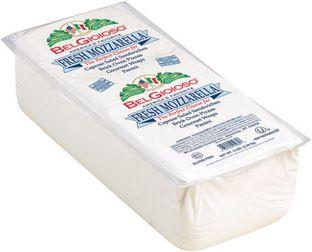
























But the descriptor doesn’t fully capture what industry veteran Greg Flynn and his team have built across more than two decades.
The organization is the largest operator for Arby’s, Pizza Hut, and Applebee’s, the second-biggest for Taco Bell and Panera, and the fifth for Wendy’s.
That equates to 2,355 restaurants nationally, 73,000 employees, and $3.7 billion in annual revenue, making Flynn Restaurant Group the largest industry franchisee in the U.S. and potentially, globally. The company stretches more than 3,000 miles, from Portland, Maine, to Portland, Oregon.
Its most significant move came in 2021, with a $552.6 million purchase of 937 Pizza Hut and 194 Wendy’s stores from bankrupt operator NPC International—the largest franchise transaction in U.S. history.
“You add all this up, it completed our journey in a way that was 100 percent consistent with our strategy,” Flynn says.
/ BY BEN COLEYWhat does it take to build one of the biggest franchise companies in restaurant history? Discipline and a perpetual focus on the bigger picture, Greg Flynn says.
That journey Flynn speaks of began in the mid-1990s via World Wrapps, a restaurant that “started the whole wraps phenomenon,” he says. The company was founded by a classmate from the Stanford Graduate School of Business, and Flynn decided to make a small investment. The first unit opened in San Francisco in February 1995, with lines around the block.
“Everyone thought ‘oh my God, we’ve got the next Starbucks on our hands, and we need to bring this to market as fast as possible,’” Flynn recalls.
To accelerate development, Flynn agreed to build stores in Seattle, where he was growing a budding real estate business. Between 1995–1999, he opened 14 units, and was quickly introduced into the “school of hard knocks for running restaurants.”
He learned to be a jack of all trades working in the front of house, back of house, construction, and other various tasks. Flynn also recognized that because he was in the beginning stages of an independent restaurant transforming into a small chain, he was playing in the riskiest end of an already treacherous sector.
Nearly all aspects were inherently more difficult, whether it was convincing landlords to lease space, vendors to sell their equipment, employees to come work, or customers to try the food.
“And you can’t borrow a dime for it, except on a full recourse basis,” Flynn explains. “Basically, you have to come up with all the money to do this.”
But in the late 1990s, he became aware of a financing opportunity in which he could receive all the necessary funds to buy into a top-tier franchise restaurant.
“I looked at this and it’s like wait a minute, I can borrow all of the money on a non-recourse basis to do this,” Flynn says. “And then once you do it, the customers already know you, employees know you and want to work for you, the landlords know you and want to lease to you, vendors know you and want to sell you equipment. Everything about it is easier.”
In that era, the hottest segment was casual dining, and the leader in the category was Applebee’s, Flynn says. So he took out a loan and purchased eight stores in the Seattle market.
He bought those Applebee’s restaurants from Clevelandbased franchisee Don Strang III, who owned roughly 70 units in Minnesota, Ohio, and Indiana, and was starting to develop New Jersey and Delaware. His Seattle outlets, however, were struggling due to expensive real estate, construction, wages, and food. The restaurants earned about $45,000 per week.
Flynn entered the venture with Brad Pettinger, who he recruited to build the World Wrapps business. Neither had much knowledge on running a full-service restaurant, but that void was filled by Dan Krebsbach, who spent years working for Strang in the Minneapolis and Seattle markets. Subsequent to the acquisition, he joined Flynn’s company as director of operations.
“He is perhaps the best restaurateur I’ve ever met in my life,” says Flynn, describing Krebsbach. “Consummate professional. And he said, listen, we can make it here in this market, but we need to do things differently than the way they’re done in the Midwest.”
Flynn and Pettinger gave Krebsbach freedom to make operational and CapEx decisions. And to ensure everyone’s interests
were aligned, the duo shifted his compensation heavily toward profit sharing and gave him an equity interest. Krebsbach launched multiple initiatives, such as leaning into the bar and late-night business, shifting promotions to different lines or products, and stacking employment to meet higher sales volumes.
Within half a year, average weekly sales grew to $60,000. The group proceeded to open a ninth and 10th restaurant, which debuted with high volumes. It was at this point Flynn and Pettinger realized they were on to something major.
A couple of years later, Flynn contacted Strang again and bought the rest of his stores, swiftly expanding the footprint from 10 to 72 units.
“When you think of when was Flynn Restaurant Group founded, maybe it was when we first got in the restaurant business in ’95, but maybe it was when we first got into Applebee’s in one market in ’99,” Flynn says. “That’s what I normally think of it as, but maybe it was in 2001 when we assumed our current configuration of being a multi-market operator.”
Flynn and Pettinger handed off the World Wrapps restaurants and committed themselves to becoming a lead expert in running Applebee’s stores.
Flynn Restaurant Group did just that, growing to more than 400 in the next decade.
By 2011, Flynn felt the company had the requisite capital, experience, and industry knowledge to become a multi-brand platform. When deciding what chains to pursue, the organization listened to the marketplace and decided to model itself after the composition of the restaurant industry, which at the time was 60–70 percent fast food and 20–25 percent full service, Flynn says. The rest was filled by the small, but growing fast-casual space.
“The idea there is, we could guess at which segment is going to be the winner in the long run,” Flynn says. “But that’s hard to do and it comes and goes and it’s just that the safest bet is to diversify along the lines of what the market is saying to you. And that may change over time.”
The other key factor dated back to Flynn Restaurant Group’s origin—only associating with mature, proven brands that have been around for decades.
The company entered fast food through Taco Bell in 2012, and now operates 280 restaurants in nine states. For fast casual, the only true options, Flynn says, were Chipotle and Panera. Since Flynn Restaurant Group already operated Taco Bell and Chipotle didn’t franchise, Panera became the No. 1 option. The operation was established in 2014, and now includes 133 bakery-cafes in eight states.
“It took a while to actually get into the Panera system,” Flynn says. “Panera hadn’t had a new franchisee in 10 years at the time we finally entered, and it took getting to know [founder] Ron Shaich personally and convincing him that we would be good for the brand.”
Flynn Restaurant Group followed that up in 2018 with Arby’s, through an acquisition of nearly 370 restaurants in


Protect your image with FLAT.® Our selfstabilizing Table Bases eliminate wobbly tables and seamlessly align to make better use of spaces indoors and out. They also come in a variety of colors and styles to match any ambiance. Learn more at FlatTech.com or call 855-999-3528.


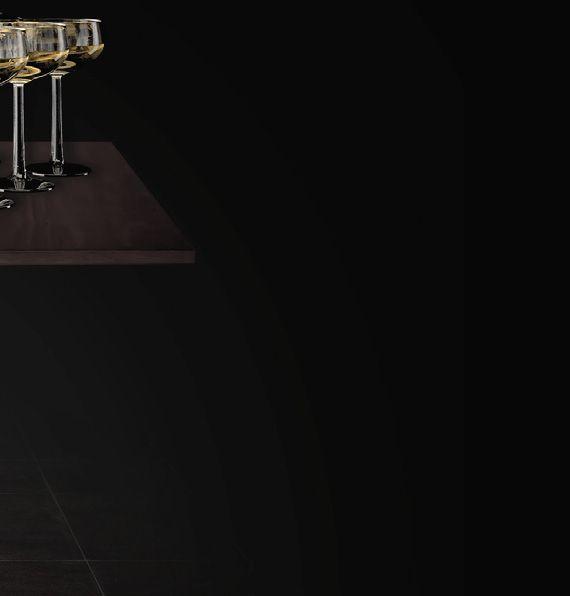


nine states. At this stage, the company had the quick-service presence it desired, but it was still outside two major sub-segments—burgers and pizza.

That is until NPC, a franchisee of more than 1,200 Pizza Hut and 390 Wendy’s restaurants, entered the fray. Hampered by COVID and steady declines in its Pizza Hut business, the franchisee declared bankruptcy in July 2020 and looked to facilitate a sale.



“We had to get comfortable that Pizza Hut as a brand was in a good place, going in a good direction, and we got very comfortable with that,” Flynn says. “All brands have good times and bad times in our experience, and Pizza Hut had a few really rough years. It’s one of the things that created the opportunity for us to buy NPC.”
Before the sale agreement, NPC shut down its worst 300 units, which Flynn calls “every restaurateur’s dream.” The 390 Wendy’s units were divided among Flynn Restaurant Group and a collection of Wendy’s franchisees.
The transaction closed March 2021. On a trailing 12-month basis, Flynn says both divisions have experienced record years.
“The portfolio that we bought was pristine,” Flynn says. “I mean there were almost no losers in it. The question was, was it going to stay that strong after COVID was over or once it subsided a little bit. Our view was that strength was actually going to continue. And we’ve seen it continue for the subsequent year after that transaction. Both are going to perform at about the same level, or a little bit better, post-COVID than they performed in ’20, which is to say very strong and right to our plan.”
Flynn compares the makeup of Flynn Restaurant Group to a federal/state system.
The “states” are clusters of 20–50 restaurants run by “governors,” or market presidents. The geography is tight enough for these executives to frequently visit restaurants and familiarize themselves with guests, vendors, and other assets. That puts them in the best position to make informed decisions, Flynn says.
The “federal” portion is the myriad resources Flynn Restaurant Group provides these clusters, like accounting, administration, finance, human resources, I.T., purchasing, training, and real estate—almost as if it were a franchisor.
Similar to how Flynn and Pettinger approached Krebsbach in the early days, market presidents have equity in the business and power to make key decisions.
“That part of our structure and our philosophy has mapped very well from our origins in full-service dining into our entry in quick service and fast casual,” Flynn says.
The fact Flynn Restaurant Group is the largest franchisee— or close to it—in all of its systems is deliberate, Flynn says. This is not only because of the beneficial scale economics, but also the meaningful seat at the table with franchisors. The objective is to serve as the best, most collaborative operator in each system.
The relationship is mutually beneficial.















Flynn Restaurant Group gathers intimate knowledge about ideas coming down the pipe, and in turn, the giant franchisee leverages valuable insight from multiple food segments.
“We respect confidentiality, but there’s a lot of general learnings we get from being very deeply inside multiple systems,” Flynn says. “And sometimes we have a broader view than our franchisors because of what we see.”
Flynn Restaurant Group participates in all of the notable franchise councils for each brand and remains significantly active in development.
Flynn says growth conversations between franchisee and franchisor go exactly as one may think—drive top-line sales, maximize operating profit margins, and determine where to go with futuristic, low-cost prototypes.
Flynn says the company is proactive when it comes to piloting new designs, equipment, and processes.
“We love to be a test partner because it’s helpful to the system, but also so that we can ourselves gain conviction around it through our own experience,” Flynn says. “And often, when we do that and we’re on board, it really helps bring other franchisees in the system along with us because as a large franchisee, we’re very diligent.”
“We have a whole data analytics team and then we have our own consumer insights team, as well,” he adds. “And so we do our homework very, very carefully on anything we look at. And so, once we’re on board, franchisors often find that helps get the whole system on board.”
The franchisee has a front-row seat to some of the most innovative brands in the restaurant industry. For instance, a Taco Bell operator in Minnesota is building a “Defy” concept—a 3,000-square-foot, two-story prototype with four drive-thru lanes (three for mobile orders)
There will also be a digital check-in screen where mobile order customers can scan their order via QR code and pick up their food via a “bell-evator” lift system.
Additionally, in November, Panera opened its first NextGen bakery-café, featuring a double drive-thru, automatic loyalty identification, digital menuboards, and a reorganized interior where the baking process is put on full display.
Flynn Restaurant Group voluntarily completed 10 Panera remodels to test new ideas. Some changes were good, some weren’t, but the important part is everyone learned from it.
“We were happy to be the one to try those things,” Flynn says. “We have enough scale that we can try 10 remodels and if it doesn’t work, OK. I mean, call it that, right? So I think, in all of our brands, everyone’s leaning more into digital, everyone’s leaning more into off-premise and convenience, and the physical assets will evolve to advance those goals.”
casual portfolio. However, Flynn says, the organization will be mindful of competitive restrictions and prioritizing expansion within its existing footprint.
In the future, it could potentially mean growth outside the U.S. “There are not many U.S.-based franchise operators that have any international presence, but there are franchise operators internationally that span multiple countries very successfully, and so I can see that being an evolution,” Flynn says. “I can see that being an opportunity for us that we start taking our experience, our platform, our capital, and take advantage of international opportunities.”
The organization would consider becoming the proprietary owner of a brand, but Flynn recognizes that takes a much different skillset.
Over the years, he’s seen successful franchisees become concept owners, but fail at taking the restaurant to the next level.
“There’s a certain hubris that sometimes franchise operators can fall victim to thinking—I’m very successful, and that success is me and so I can do anything,” Flynn says. “I can go buy a brand, and I’ll run that just as well. What they’re maybe not giving enough appreciation to is the fact that it’s not just us. We’re part of a system, and the system is successful, and you may be a great franchise operator, but that doesn’t mean necessarily you’re going to be great at running a brand.”
In some cases, larger operators—like Burger King franchisee Carrols Restaurant Group—go public and trade on the stock market. For Flynn, reasons to go public include needing capital that can’t be accessed in other ways and seeing a big valuation difference between serving as a public company and as a private one. Neither are close to true for Flynn Restaurant Group.
Flynn also notes that being public provides currency that can be used for acquisitions and allows a company to share equity with employees.
He sees those as legitimate reasons, but not enough for him to make that move.
“I actually love being a private business,” Flynn says. “It helps us keep a very long-term perspective and not worry about quarter-to-quarter results nearly as much as what’s the outcome in five or 10 years. Then there are restrictions we have in our franchise documents. I mean, it’s conceivable, I could get all of our franchisors on board to go public, but it would be a heavy lift. And, frankly, given that I don’t want to anyway, I think it’s highly unlikely we will ever be public.”
In terms of the industry as a whole, Flynn foresees more consolidation among franchisees, and for good reason.
In 2021, Flynn Restaurant Group was named Franchisee of the Year for Applebee’s and Arby’s because of its ability to invest in people and assets at a level smaller operators can’t replicate.
Although the NPC acquisition completed a 10-year quest toward becoming a multi-platform powerhouse, it by no means closed the door on future acquisitions.
The company will continue to be opportunistic by applying the same guidelines it used to obtain its quick-service and fast-
Flynn says franchisors have come to realize that big doesn’t mean bad. In fact, big could mean good, or in the case of Flynn Restaurant Group, extremely good.
“I’d like to think we are close to being the best partner for our franchisors, and our scale is part of that, it helps with that, it doesn’t hurt that,” Flynn says. q










































KFC’s multi-year turnaround is taking a step up in 2022— with a look that both reflects its past and a future full of possibility.

 / BY DANNY KLEIN
/ BY DANNY KLEIN



KFC is riding eight consecutive years of positive same-store sales growth—a comeback that’s progressed beyond the turnaround stage into something more lasting. Now, it’s time to complement one streak with another, chief development officer Brian Cahoe says. KFC opened 55 new U.S. locations in 2021, for a net of four stores. Despite pandemic setbacks, delays, and closures, it represented the first time the chain has been net new unit positive in 17 years. ¶ And Cahoe says KFC will go back-to-back in 2022. ¶ “What you’re seeing in the U.S. is a continuation, and even a building, of momentum of all of the strategies we’ve been bringing to life and the foundation that we’ve put in place,” he says



In domestic markets, KFC’s same-store sales climbed 12 percent in Q4 and 13 percent for all of 2021, both on a twoyear basis.
Beyond coupling sales with unit expansion, KFC’s multiyear effort to reinforce its brand identity is coming into sharper focus as well. This past year, the chain hit a prior goal when it converted 70 percent of its system to the “American Showman” design, recognizable by bright red-and-white stripes ( like a chicken bucket), bucket chandeliers, and graphics that serve as an allusion to the Colonel’s hard-working background. A modern take on KFC’s roots.


Cahoe says the brand remodeled “hundreds of assets” over each of the last few years, pandemic conditions or not. However, during the chain’s sales climb, there’s been under-
lying innovation at work. KFC’s digital integration, via delivery, pickup, e-commerce, and app, was a development gaining relevance ahead of COVID. But it’s rushed to the surface, just as it has across Yum!’s portfolio and much of the sector. Yum! posted $22 billion in digital sales last year—a company record. KFC’s U.S. digital sales soared 70 percent, year-over-year, driven by its delivery service channel and e-commerce platform that launched nationwide early last year. In Q4, KFC also introduced “Quick Pickup,” where guests walk-in and grab mobile orders out of cubbies. Cahoe says the update, in essence, is rolled out nationally at this point.
All of it, though, is fueling where KFC goes next: the rapid introduction of the company’s “Next Generation” asset base, and all the connectivity that comes with it.



Transforming your vegetable creations into something amazing just got easier. Fire ‘n Ice™ fire-roasted individually quick frozen (IQF) vegetables offer sophistication, fresh flavor, and an indulgent culinary experience every time.
Fire ‘n Ice fire-roasted IQF vegetables deliver mouth-watering, artisan appeal that will make any finished product a culinary delight.

• Choose from a complete range of vegetables, from artichokes to zucchini
• Create unique customizable blends











• Consistent quality and fresh flavor without preparation costs or food waste



• Ideal for foodservice offerings, plant-based entrées, and better-for-you comfort foods.


KFC opened its first Next-Gen restaurant in Berea, Kentucky. Introduced in November 2020 and debuted in Q4 2021, it boasts a digital-forward and contactless experience, including the company’s first double drive-thru lane. Additional NextGen stores opened in Westfield, Massachusetts, and Detroit.



Sitting today, about 25 percent of KFC’s pipeline are NextGen builds, Cahoe says. The only reason the mix isn’t higher is because 2022 represents a transitory phase of sorts, due to construction and general growth timelines. “We went from concept design to last year getting those first locations permitted and
built out and now open,” Cahoe says. “And we’ll go through that round of learnings and feedback with franchise operators.”
In other terms, learnings and field experience are influencing KFC’s coming era. But it’s arriving fast.
Pradnya Bendre, director of KFC U.S. architecture and design development, says flexibility was a key component to visualizing the brand’s Next-Gen models. And so were some of the tenets driving the chain’s eight-year comeback. “We wanted to elevate KFC’s distinctive identity and really take it to the next level,” she says. “Especially from the point of new customers

































emerging in a post-COVID world.”
Reflecting trends seen across quick service, Next-Gen packs digital integration into a smaller footprint, anywhere from 1,300 square feet to 2,200. The lower end is an off-premises-centric model without a dine-in element. There’s a lobby for customers, or couriers, to walk in and grab their food.
The signage is deliberate, too. Dedicated parking spots for online orders. Visible wayfinders to lead customers to an entrance for online orders. And the Quick Pickup shelves are a part of all Next-Gen builds to remove friction inside.
The dual-lane drive-thru is something that can flex as well. Bendre says there are options, based on trade area and markets, and, essentially, how much digital business is part of that location’s mix, to use them as multiple order points or to dedicate one as an “express lane” for order-ahead guests. Adding dual lanes is an option KFC wanted to make available for franchisees, she adds, due to how challenging it is (or virtually impossible) to retrofit to current locations.
Meanwhile, there’s work being done in the back of the house to create more efficient flow, Bendre says. “How our back-line responds to the online channel, or how the cook-line responds to the drive-thru channel—it was very important for us that we put focus on those aspects,” she says.
Cahoe says the COVID real estate market has been a jumble, varying wildly from market to format. In the early days, forecasts of mass closures suggested sites would be up for grabs in the fallout. That hasn’t quite come to fruition, Cahoe says, at least not for KFC, because the quick-service sector isn’t where the retraction pulsed. Especially at drive-thrus. That and off-premises “has been a strength that has been part of our momentum,” he says, “but it’s also been a part of the momentum for competitors.”
In turn, there’s a mixture of availability and cost of real estate as it relates to existing drive-thrus or pads that can be permitted or zoned for drive-thru. “That, arguably, has got more competitive since the pandemic started,” Cahoe says.
And not only are brands like KFC jostling for drive-thru, or pickup lane space with other established players, but fresh entrants are flocking in, like Shake Shack, sweetgreen, CAVA, Chipotle, Noodles & Company, etc.
All that said, however, KFC ended 2021 with 26,934 restaurants—22,981 internationally and 3,953 in the U.S.
Back in 2000, there were 5,364 KFCs stateside. The figure started to fall from 2010–2011, when KFC’s system retracted by 388 locations. It would drop by at least 100 units for the next six years, going from 4,780 to 4,109. And then, the comeback mentioned earlier picked up. Closures slowed to 58, 35, and nine, before 122 in COVID’s first year. As noted, the number flipped into the green for 2021.
Yum! CFO Chris Turner called this past year an “inflection point in development” for KFC, and one Cahoe believes will only shoot upward.
Additionally, 3,953 locations presents “tremendous runway for growth,” Cahoe says. “Really, in every market throughout the U.S.”
For a national brand with massive awareness and equity,
sub-4,000 gives it plenty of space to infill, enter new markets, and everything along the way. There are 11 quick-service brands with more locations than KFC today. Subway, at the end of 2020, had more than five times the number of domestic units (22,190)
“In some cases, competitors that are larger than us today might have that cannibalization or infill challenge. We don’t,” Cahoe says. “So we can be opportunistic and competitive and go after those sites and continue to grow.”
A key part of KFC’s go-forward strategy will unfurl across urban inline expansion. KFC’s Next-Gen design and features are flooding this arena as well, where the chain has aggressive plans for New York and St. Louis, and other city centers.
Cahoe says this is one U.S. area where KFC is underpenetrated versus its national footprint. The company opened its first Next-Gen urban inline in 2021, and more are coming down the pipe.
Bendre says KFC’s Next-Gen hallmarks, like Quick Pickup and digital call-outs, are taken to “the next level” with urban designs given the consumer that generally comprises those markets. “Their expectations are a little different,” she says. “Their lifestyles are different.”
Interiors are designed to reflect communities and stores feature 10–20 seats, including more countertop seating as opposed to the typical four-top tables seen in suburban KFCs. There’s also designated signage to direct customers and delivery drivers to in-store mobile pickup areas.
The Next-Gen urban inlines, which range from 1,400 to 1,800 square feet, are modern in look and spend even more time on the kitchen layout to ensure tight spaces don’t stall throughput. Six are planned for this year.
The foundational unlock, Cahoe says, is access through digital channels. It alleviates the must-have of a drive-thru to deliver on convenience.
In time, all new builds and formats, in the suburbs or cities, will be Next-Gen assets. Bendre says franchisees are clamoring to open them, and the brand is seeing “more traction than we expected.”
Cahoe believes that can be traced back in time as well. Offpremises, as recent a movement as it feels, is something that’s actually been in KFC’s DNA for decades. Picnics. Buckets of chicken on the Sunday dinner table. The brand didn’t have to cross many awareness gaps when it came to serving at-home occasions spurred forward by COVID. Digital simply made it all work faster, and in multiple formats.
“As much as you can talk about that being nostalgic, the reality is that it’s very fitting to where the consumer has already moved,” Cahoe says. “And where we think the consumer continues to stick as we go forward.”
Current conditions are also helping to democratize KFC further. Delivery, in particular, is bringing KFC to a broader audience and allowing it to reach different demographics.
“I like to think these are exciting times,” Bendre says. “We don’t see them as challenging times.” q
With Hatco® innovation, holding items warm or at room temperature for your pickup and delivery business is easier than ever. Hatco Flav-R 2-Go® and Glo-Ray 2-Go® locker systems are plug-and-play ready, out of the box. If you prefer, connect your Hatco Locker to your existing POS system. Ideal for front-of-the-house, back-of-the-house or ghost kitchen, our solutions come standard with touch screen controls for temperature, timers and customer order information. Our solutions come in a variety of colors and configurations, making it easy to choose an option that works perfectly for your operation. Discover the innovation that fuels our products and drives your success.















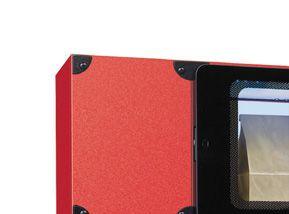














 / BY DANNY KLEIN
/ BY DANNY KLEIN


cross-channel digital world has emerged out of the pandemic. Here’s why it’s not going anywhere.


fore the pandemic, restaurants weren’t exactly first to the innovation stage. Hospality can be fickle. Consumers change. So do markets and demographics. And, at ast in multi-unit and franchise systems, the ROI on any bill placed in front of operors has to print in big letters. ¶ However, COVID forced the cycle to step quicker. other external force was capable of stripping access the way dine-in bans did. turn, restaurants, and quick-serves in particular, sped to open channels and get fod to guests. Drive-thru, curbside, mobile, and the rethinking of kitchen capacity virtual brands, went from boardroom plans to overnight reactions. Eventually, as rtaurants turned the corner, consumers reclaimed their center of gravity, Judy Chan, CMO of customer arrival platform Bluedot says. ¶ And so, where did this take resturants? Straight into an era of convenience, which is something the consumer was aking of restaurants pre-virus. “Across six studies, consumer demand for convenience s stood out as a key theme,” Chan says, referencing the company’s consumer polls toughout the crisis. “In the coming year and beyond, we’ll see restaurant brands aggressively invest in digital strategies both in-store and off-premises to improve
C ONSUME R IN NOVATIO N W ISH LIST :



56 % DE SIGNAT ED DR IVE-TH RU LANE F OR MOBIL E PICKUP
•
42 % FOOD
KE PT WA RM AT PICK UP STATION
•

27 % LE Y I N G AN D KU P % A N T C ALLY CK S CSOE R IN R I VAL S ID E % TO TEXT R





speed and ease of use and that includes the arrival experience. Delivering that level of convenience will win brand loyalty.”
To put it plainly, consumers still favor many of the pandemic’s dining pivots. They want to balance prior habits, like dine-in, with occasions picked up over the past twoplus years. And this drives the convenience bar higher.




At the drive-thru, gains feel permanent, per Bluedot data. In February 2022, and September, May, and February of the previous year, the percentage of consumers who visited a drive-thru in the last month was at, or just under, 90 percent. A month after COVID hit? The figure was 79 percent. Visitation has remained consistently 10 points higher than those early, strange pandemic days.
It isn’t news to quick-serves. Drive-thru lines haven’t blurred segment-wide; they essentially no longer exist. By mid-February, Shake Shack had three ( Maple Grove, Minnesota; Lee’s Summit, Missouri; and Livonia, Michigan) with more on deck for Vineland Pointe in Orlando, and Castle Rock, Colorado. It expects 10 up and running by 2023, while 25 percent of its entire corporate fleet of openings this year will include either a “Shack
Track” walk-up or drive-up window. Chipotle’s 3,000th location—opened February in Phoenix—featured the brand’s digital order drive-thru pickup lane, or “Chipotlane.” In 2021, the fast casual debuted 215 units and 80 percent included one. The same mix will comprise the 235–250 restaurants expected this calendar year.
Even Applebee’s, which launched a drivethru pickup window in Texarkana, Arkansas, brought its third to market recently—a reaction to the fact sales outside the four walls accounted for 26.7 percent of the business in Q4. Average off-premises weekly sales were $13,800, more than double pre-pandemic. Texas Roadhouse is building them, too. As is barbecue chain Smokey Bones, which designed a full-tilt, digital-enabled drive-thru at a Bowling Green, Kentucky, location. The setup includes the chain’s virtual brands and a dedicated space inside the restaurant, complete with point of sale and audio headsets. Without question, drive-thru competition has taken off.





In March, Hanley Investment Group Real Estate Advisors arranged the sale of a new construction, single-tenant Habit Burger. Complete with a drive-thru, the site at California’s Monterey Crossing shopping center sold for $4.57 million, which the company said was a record-low cap rate nationwide

CH ANGI NG H ABITS :

WH EN ASK ED WHA T WAS THE MOS T IMPR OVED AS PECT OF THE FAST-F OOD EX PERIEN CE SIN CE CO VID












58 % PICKED M OBIL E APP OR DERI NG •
60 % IN CREAS ED U SAGE O F S ELFSE RVI CE OR DERI NG OP TIONS IN THE PREVI OUS SIX MONT HS • M OBIL E O RDERIN G






48 % • WEB O RDERIN G







22 % • K IOSK S INSID E THE S TOR E

14 %



for a single-tenant Habit Burger.

“We created a competitive bidding process that helped secure a 1031 exchange buyer at 100 percent of the asking price,” says Bill Asher, Hanley Investment Group EVP. “… We expect to see more [quick-service restaurants] with drive-thrus as companies roll out their prototypes across the U.S.”
Bluedot asked consumers what they felt was the most improved aspect of the fast-food experience since COVID. Fifty-eight percent picked “mobile app ordering,” followed by curbside pickup (44 percent), web ordering (29 percent), drive-thru (25 percent), and offers (21 percent)
The top three least improved areas: Taste, ideal food temperature, and order accuracy.
And on the topic of how habits could change going forward, or if more setbacks arise, 34 percent of guests said they’d place additional mobile app orders, trailed by visit the drive-thru more (34 percent), tap web orders (21 percent), and use curbside.
Of those who still fear for their safety, 52 percent turned to mobile or online ordering.



Again, though, the conversation of late has largely shifted toward convenience as the lasting impact. “Removing friction” is a well-worn page in the playbook. But can operators lean on old consumer trade-offs? For instance, is the drive-thru convenient enough for guests to accept mistakes or antiquated technology?


Perhaps, but the leash is tightening.


Consumers in the survey listed their innovation wish list: Designated drive-thru lane for mobile pickup (56 percent ); food kept warm at pickup station (42 percent); mobile only ordering for fast and easy pickup (27 percent ); restaurant automatically checks customer in upon arrival at curbside (27 percent ); and ability to text order to restaurant (27 percent ).


Guests also expect more from menuboards. The top features they’d like to see: Shows current order on the screen (55 percent); highlights deals (51 percent ); view loyalty points and/ or personalized deals (36 percent ); highlights limited-time items (34 percent); showcases mostpopular items (30 percent ); shares suggested menu items based on previous orders (25 percent); and name and usual or most recent order displayed (18 percent )
In addition, 60 percent of respondents increased usage of self-service ordering options in the previous six months, including mobile ordering (48 percent ), web ordering (22 percent), and kiosks inside the store (14 percent ).
What’s driving frequency is the same storyline that flashed amid COVID—consumers went where friction wasn’t. Six in 10 consumers, even in 2022, said they downloaded at least one new restaurant app in the last three months. It’s held throughout. February (59 percent ); September (59 percent); February 2021 (82 percent ); August 2020 (63 percent ); and April 2020 (51 percent).

According to App Annie, users spent 49 per-






































RELIABILITY









Mechanical improvements to sensors, fans, controls, and other components to enhance performance and minimize downtime.












INTUITIVE CONTROLS




New next generation, capacitive touch controller with modern user interactions found on a smart device that takes the guesswork out of fryer operations.







SERVICEABILITY






Serviceable components accessible from front of fryer for easier and quicker removal and minimizing downtime.













AUTOMATIC, DIRECT INTERNET CONNECTION
No need to connect to Wi-Fi or an edge server for accessing Cloud capabilities such as remote and diagnostics.

BOOTH #2893
BOOTH #4023


cent more sessions, year-over-year, in food and drink apps last year, reaching the 62 billion mark. Across all of 2021, McDonald’s collected 24 million app downloads in the U.S.
Restaurants raced to this arena because COVID leveled the digital playing field. Guests sought brands as much as platforms, which was a course change from pre-pandemic trends. Previously, the debate over whether or not third-party delivery transactions were, indeed, incremental, was often a question of “was this a customer I would have got before?” Now, guests didn’t take to delivery solely to look for, say, burgers or because they were aggregator loyalists; they wanted food from a specific eatery that closed its front doors. So restaurants worked quickly to enable off-premises.
In a TouchBistro study from early 2022, which focused on full-service restaurants, 34 percent of operators said they were now offering online ordering directly from their website. More than half (57 percent) said they had a loyalty or rewards program of some kind, and two in five implemented loyalty in the last year or two.
Tillster, from a report released roughly the same time, indicated consumers would rather interact directly with their favorite brands. Forty-four percent of respondents said they’d prefer to order delivery directly through the restaurant’s website or mobile app. Less than 10 percent put third-party delivery experiences at the top of their list.
Shake Shack CFO Katie Fogertey told investors at the ICR Conference in January
funneling customers into native channels would be a major area of emphasis in 2022. The chain launched a new website in 2021. “We’re building personalized marketing opportunities to help drive frequency and guest connection,” she said. “We just know and we continue to see it, when we bring a guest into our digital ecosystem, we see higher frequency, we see higher checks. There’s a better guest experience associated with that. We just think they understand who we are and the value that we offer more.”

This far into the COVID story, it’s clear why apps gained relevancy, and why brands invested behind that wave. Going forward, the ability to market lower price points through direct channels (versus third-party delivery) will play a key role in getting customers to fork up invaluable data.
For those aged 45–64 in Tillster’s study, nearly a third (29.6 percent ) said they’d be willing to spend $5 in delivery fees. Yet among those aged 65-plus, 35.7 percent said they wouldn’t pay $1 in delivery fees.
According to Paytronix, 96 percent of restaurant managers mark down prices for loyalty program members, and the average loyalty discount clocks in at roughly 3.8 percent.
Restaurants charge an average of 24 percent more for menu items listed on aggregators than for the same items on their own channels. Twenty-seven percent of quick-service managers added they sell the same foods for
DR IVE-TH RU
COM PETIT ION HA S TAK EN OFF:

CO NSUM ERS WHO VI SITED A DR IVE-TH RU IN THE LA ST MONTH
W AS AT, OR JU ST UND ER , 90 % • S HAK E S HAC K EXPE CTS TO HAVE 10


DRIV E-TH RUS UP AN D RUN NING BY 2023 •

APP LEBE E’S HAS OPENE D ITS TH IR D
CH IPOTL E’S 3,000 TH L OCATIO N
FEA TURED THE B RAND’ S D IGITA L O RDE R
DR IVE-TH RU
P ICKU P LANE, OR “CH IPOTLA NE. ”



higher prices on aggregators (14 percent or sit-down brands )
For a bevy of external reasons, consumers are more cognizant of fees than in previous years. Per Tillster, the maximum delivery fee the average person was willing to pay in 2021 was $3.90. Pre-COVID, 85 percent of customers said they were willing to spend up to $5. Throughout the pandemic, brands explored free delivery and other lures to drive business when dine-in sagged. As a response, only 44 percent of people in Tillster’s data, a mere two years later, were still willing to pay $5 or more.
More than a third (37 percent ) of customers in Bluedot’s study added they were placing more mobile orders on restaurant apps than three months ago. And there’s more going on than just price. The No. 1 reason here—nearly one in two said they’d download an app to bypass a long line. Fast and easy to order (52 percent ); earn and track loyalty points (49 percent ); exclusive deals or coupons (48 percent ); and ease of payment (42 percent ) rounded it out.
And to the earlier preference shift, the majority (57 percent ) said they use all, or mostly all, restaurant apps over third-party apps.
In terms of whitespace, just like drive-thru, a flood of traffic surfaced problem areas. Nearly half of consumers said they’d delete an app if their order was cold upon arrival.
They’d also do so thanks to limited-menu options (47 percent); still have to wait (42 percent); doesn’t save time (31 percent); and can’t customize order (36 percent )
Guest satisfaction, in general, boarded a COVID roller coaster. One in two consumers told Bluedot they were most frustrated with orders not ready upon arrival.
Also: order was ready but still needed to wait (50 percent); food was cold (47 percent ); order was inaccurate (45 percent ); and no designated mobile order pickup line (29 percent )
The final point is a lead reason why brands are plotting multiple-lane drive-thru designs, order-ahead pickup windows, investing in shelves inside, or working with dual make-lines to split digital and in-store business. This topic saw the largest increase, of 32 percent, Bluedot recorded since polling guests. As it turns out, convenience channels can cause friction in their own ecosystem.
Consumers don’t appear to be getting more patient. Ninety percent of diners said four to seven cars in a drive-thru was still too long to wait. That figure was 88 percent in April 2022.
Seventy-six percent said they’d either leave or consider doing so if they pulled up and saw that many vehicles.
rants communicating accurate delivery estimates. Using Shake Shack as an example, it layered in dynamic prep time into a recent app update.
Similar to fees, time-based challenges are pushing guests into multiple digital channels—not necessarily away from them and into the restaurant booth. Many consumers who have become convenience loyal are looking for alternatives. Across urban/ rural divides and family sizes, more than 70 percent of Tillster respondents said they’d rather pick food up than wait for a long delivery.
The average quick-serve customer today is ordering delivery twice each month, Tillster found. At 2.5 orders per month planned in the next three months, we’re looking at a 32 percent bump from 2019, with a definite rise among middle and older-aged groups.
In the next year, 81 percent of respondents will order online for delivery the same amount or more often.
Pulling out Gen Z, perhaps the fastest-rising cohort of restaurant guests, nearly 86 percent said they would “probably” or “definitely” order from their favorite fast food or fast casual more often if it offered delivery. They were also more likely than any other age group to order multiple dayparts, including lunch and late-night. Twenty percent said they’d spend $10 or more in delivery fees.
In Bluedot’s study, three out of four consumers (of every demographic ) were willing to share their mobile location for better service. Sixty-nine percent said they’d do so if it meant their order was ready upon arrival. Forty-seven percent were on board if it resulted in a hot meal. Coupons (32 percent ), and to not miss out on the brand’s latest offerings (21 percent ), factored in as well.
One place you can see this in action: More than 50 percent of Panera Bread’s orders today are processed in a fashion that captures data (app, online, kiosk, drive-thru, loyalty at the register). And all indicators suggest customers will keep doing so if the restaurant makes it worth it.
What has digital done to tipping? It’s an important question as restaurants battle labor dynamics. The ability to promise higher hourly wages thanks to tipping is one lever many brands are hoping to pull. Employees at fast casual Honeygrow, on average, make about $13–$15, depending on position. Managers north of that. However, the chain’s 100 percent digital format ( kiosks in-store ) lends itself to tipping more often than not, CEO Justin Rosenberg says.
It measures in the ballpark of $1.50 an hour, meaning those same front-line workers can actually gather $16.50, or more.
Respondents across Tillster’s study agreed delivery time was a critical factor after all these months. Forty percent said they’d wait 40 minutes. Anything above that and sentiment rolled off a cliff. Only 21 percent claimed they’d wait 41 minutes or more.
The most important counter, according to guests? Restau-
“There’s a lot of places where you can go to a coffee shop and oftentimes I’ve noticed folks, they order, they use their card, and then the cashier will spin the iPad around and then there’s the tipping option,” Rosenberg says. “And I think a lot of times people feel uncomfortable with that. Whereas with the kiosks the way we have it, there’s no pressure.”
It’s helped with training, too. “How can Honeygrow make




the experience better for the guest” isn’t just a whiteboard tactic that flows from the top down, Rosenberg says. Exceeding customer expectations is something hourly employees see right there on their paychecks.
Close to half (46 percent) of Bluedot respondents said they do not tip for mobile and web orders. Of those who don’t, 27 percent admitted to thinking about it, but ultimately deciding not to.





Thirty-seven percent also feel pressured at the counter to tip. Requesting for a tip on a tablet made one in three consumers uncomfortable, and of those who don’t feel pressured, 70 percent were happy to tip.





















Overall, while inconsistent, 74 percent of consumers said they tip at restaurants. Thirtythree percent tip equally regardless of whether they’re ordering via app, web, or in-person, while 30 percent tip more in person, and 11 percent said they do so online.
A majority (58 percent) said they tip appropriately when placing orders with third-party apps; 13 percent extra; 9 percent less; and 20 percent not at all.
The higher checks restaurants, mainly in quick service, continue to report from mobile orders and digital channels, appear a reflection of larger party sizes and patience in menu selection as much as anything else.
But in all, there’s little debate restaurant customers learned from the pandemic, just as restaurants did.

They turned to digital out of necessity, yet have become full-circle guests with higher
demands.




According to Paytronix’s 2022 Restaurant Friction Index, released in March, 41 percent of an average restaurant’s sales now flow through digital channels, including mobile apps, aggregators, and websites. It’s far more than the 32 percent generated via brick-and-mortar location and 26 percent from phone calls.
Restaurants were receiving orders through an average of 2.7 different purchasing channels at any given time (mobile app, aggregator, desktop website, on-site visits, or over the phone ) “Today’s most successful restaurants look at the customer experience holistically, not as separate channels,” says Andrew Robbins, CEO of Paytronix Systems, Inc.
Unsurprisingly, 41 percent of managers noted in the report they consider it “very important” today to provide customers with a consistent, integrated cross-channel ordering experience.
On top of that, providing the right ordering (39 percent ) and payment options (38 percent) would be “very” important to their innovation strategies going forward. Loyalty features and pickup options were equally common considerations, at 38 percent, respectively.



“In this environment loyalty, payments, and digital ordering all work in concert so that whether a guest orders from their couch or from the table in a restaurant, the experience is one that keeps them coming back,” Robbins adds. q






 / BY TREVOR GRINER
/ BY TREVOR GRINER

















THE INDUSTRY’S BIGGEST CONFERENCE IS BACK. HERE’S WHERE TO GET STARTED.














Co-founder of Reddit and founder of Seven Seven Six, Alexis Ohanian, will be the Keynote speaker at this year’s Show. The tech mogul will shed light on how creating and embracing disruption can amplify growth and produce positive transformations.

The session will be moderated by Starr Marcello, Deputy Dean of MBA Programs at the University of Chicago Booth School of Business. Marcello is an expert in entrepreneurship and innovation and will weave her knowledge throughout the conversations as they discuss Ohanian’s expertise as it related to disruptions that are currently underway and how those disruptions will translate to the foodservice industry. Topics will include crypto currency, web 3.0, and historical and cultural shifts.

• WHO: Alexis Ohanian, Starr Marcello

• WHERE: Grand Ballroom (S100), South Hall
• WHEN: Saturday, May 21, 2022 , 2 P.M. CST





















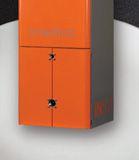










By now, everyone is aware of the issues surrounding staffing that have plagued the foodservice industry. This session, led by Patrick Yearout, Director of Innovation at Ivar’s Restaurants, will highlight strategies to help operators learn creative and economical sourcing practices to ensure they’re recruiting and retaining the best available talent, regardless of brand size.
• WHO: Patrick Yearout, Director of Innovation at Ivar’s Restaurants
• WHERE: Education Super Center, South Hall, 2778
• WHEN: Saturday, May 21, 2022 , 10 A.M.- 10:30 A.M.
With so many options when it comes to beers these days, maximizing the profit on the beverage can be tricky business. This session dives into the best methods of ensuring operators are getting the best return from their beer sales. Experts will share up-selling strategies, identify opportunities to expand menus, and share tactics related to differentiating offerings from competitors.
• WHO: TBA
• WHERE: The Beverage Room Stage, Lakeside Center, 11430
• WHEN: Saturday, May 21, 2022 , 10 A.M.- 10:45 A.M.
The modernization of the restaurant world isn’t stopping, and that means owners and operators are



•

going to have to know how to use data to their advantage. This session is designed to show how supply chain data can help operators create better business practices, while hearing real life examples of how successful operators are leveraging purchasing data. Cost saving and operational efficiency strategies will also be discussed.
• WHO: Francisco Moya, Chief Technology Officer at InsideTrack
• WHERE: Education Super Center, South Hall, 2778
• WHEN:
Saturday, May 21, 2022 , 11 A.M.- 11:30 A.M.

Having and utilizing the right technology these days can be the difference in running a successful business and having to close shop. Today’s technology can help operators build better, more personal relationships with their guests, both on and off premise. This session will explore how restaurants can leverage technology to grow business, market to guest, and strengthen customer loyalty.
• WHO: Brian Cotlove, Chief Business Officer at BentoBox
• WHERE: Innovation Theatre, North Hall, 5572
• WHEN:
Saturday, May 21, 2022 , 11:30 A.M.- 12 P.M.

With so much focus being placed on sustainability and plant-based foods, it’s important to know what information floating around is true and what’s bunk. Meat and Dairy alternatives are becoming more mainstream and with that comes a degree of uncertainty surrounding the relatively new space. Hear from a panel of experts during this session as they discuss the biggest myths and realities surrounding this space. Attendees can also expect
to hear predictions for the trends in the plant-based food and meat alternative space.
• WHO: Carin Stutz, President and CEO at Native Foods
• WHERE: Education Super Center, South Hall, 2778
• WHEN: Saturday, May 21, 12 PM.- 12:30 P.M.

Operators these days are faced with a shortage of just about everything. Employees, supplies, and traffic can
all be hard to come by. Fortunately, new tech aimed at helping operators streamline online and on-premise functions is being introduced at an accelerating rate. This session will dive into technology that can be applied at scale and is geared towards easing day to day operations, while increasing revenue potential.
• WHO: Brendan Sweeney, CEO and co-founder at Popmenu Tony Roy, President and co-founder at Popmenu
• WHERE: Innovation Theatre, North Hall, 5572
• WHEN:
Saturday, May 21, 2022 , 3:30 P.M.- 4:15 P.M.
 National Restaurant Association Show 2022
National Restaurant Association Show 2022


















































It’s no secret that the restaurant industry suffers from some of the highest rates of mental illness in any profession. This topic is particularly timely, as May is national Mental Health Awareness month.

Sponsored by Tetra Pak, this session will feature conversations about why prioritizing mental wellness for both staff and operators is a critical component to running a successful business.
• WHO:

Sponsored by Tetra Pak
• WHERE: Education Super Center, South Hall, 2778
• WHEN:
Saturday, May 21, 2022 , 4 P.M.- 4:30 P.M.

Labor challenges continue to be one of the major issues operators face as on-premise business continues to pick up as COVID cases and restrictions are on the decline. But that doesn’t mean restaurants have to sacrifice service. This session will feature operators discussing the strategies they have employed to manage their beverage programs while dealing with staffing shortages.
• WHO: TBA
• WHERE: The Beverage Room Stage, Lakeside Center, 11430
• WHEN: Saturday, May 21, 2022 , 4 P.M.- 4:45 P.M.
CULINARY DEMOS:
Want to see some of your favorite chefs from around the country go to work in the kitchen? Check out some of these cooking demonstrations happening throughout the Show, located at The Culinary Experience, Lakeside Center, 10448

SATURDAY, MAY 21, 2022SUNDAY, MAY 22, 2022
CHEF

Eleven Eleven
• WHEN: 10:0 A.M.- 11:15 A.M.
DIRECTOR AT FRONTERA GRILL AND FRONTERA HOSPITALITY Frontera, Topolobampo, Xoco

• WHEN: 10:30 A.M.- 11:15 A.M.
• WHEN: 3 P.M.- 3:45 P.M.
Lamar Moore EXECUTIVE














•

Running a successful bar program can be a huge boon to the bottom line of a business. So, how can operators who are working with a relatively small marketing budget boost sales and maximize profitability? This session will explore how operators can grow their customer base and elevate their bar programs, all while keeping costs down. Attendees will hear firsthand accounts from operators who have successfully implemented growth strategies for less than expected.
• WHO: Ben Smock, Owner at Hummingbird Lounge Megan Schneider Gil, General Manager and co-founder at Bitter Pops
• WHERE: The Beverage Room Stage, Lakeside Center, 11430
• WHEN: Sunday, May 22, 2022 , 11 A.M.- 11:45 A.M.
Bringing your restaurant up to date on the technology front can be a strenuous undertaking, especially when trying to decide who to partner with when there are so many tech vendors on the market. What fits for your business? Are the tech updates meeting the needs of your customers? Is simple better than expensive? All of these questions and more will be answered at this session, which details research and evaluation methods that can help operators find the best digital and cloud-based solutions.
• WHO: Patrick Yearout, Director of Innovations at Ivar’s Restaurants

• WHERE: Education Super Center, South Hall, 2778
• WHEN: Sunday, May 22, 2022 , 12 P.M.- 12:30 P.M.

This session is tailormade for operators who are looking to boost their brand awareness by utilizing digital channels without the help of a massive marketing team. Successful brands will share tips and strategies on how to leverage digital tools to
grow businesses for the long-term.
• WHO: Sponsored by Tetra Pak
• WHERE: Education Super Center, South Hall, 2778
• WHEN: Sunday, May 22, 2022 , 3 P.M.- 4 P.M.
Health and wellness have become buzzwords in the last several years, and that trend has extended to the world of booze. With more customers considering healthy alternatives, spirit-free cocktails have grown in popularity. This session will spill on the latest trends in spirit-free cocktails and how operators can create a successful beverage program that incorporates a larger customer base by offering alcohol-free cocktails.
• WHO: Michael Sabitoni, Associate Professor and Department Chair, Food and Beverage + Travel and Tourism studies at Johnson & Wales University
• WHERE: The Beverage Room Stage, Lakeside Center, 11430
• WHEN: Sunday, May 22, 2022 , 4 P.M.- 4:30 P.M.
National Restaurant Association Show 2022Don’t let supply chain issues slow you down. We are fully stocked and ready to deliver!
6 MODELS TO FIT YOUR KITCHEN!
SAFE COUNTERTOP FRYER OIL DISPOSAL HAS ALWAYS BEEN AN ISSUE—WE ARE YOUR SOLUTION!

THE ISSUE: Safe fryer oil disposal.
THE SOLUTION: The Shortening Shuttles® allow you to safely and easily transport hot oil to the dumpster.
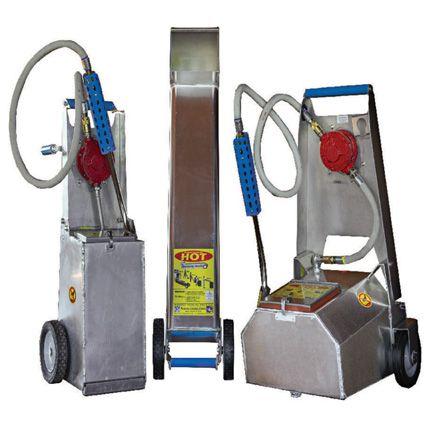

THE ISSUE: Limited space for necessary equipment.
THE SOLUTION: Small foot print of 14" x 19" x 37" tall. Generous capacity of 5.5 gallons. The new SS-645 MINI FITS!
THE ISSUE: Quality. There is so much junk out there folks are reluctant to buy ‘more junk.’
THE SOLUTION: 30+ experienced industry provider of PROVEN quality equipment.
+Menus might be shrinking, but comfort food is sticking around.
Worcester Industrial Products
SAFE WASTE OIL TRANSPORT

Health and wellbeing are essential foundations to employees’ success. It’s no secret that a healthy, happy workforce is more productive, and more and more brands are launching wellness programs in an effort to create sustainable working environments. This session will feature national and regional operators discussing the process and value of establishing a health and wellness program.
• WHO: Damian Hanft, Vice President, Culture and Brands Ambassador at Inspire Brands
Kelly McCutcheon, Vice President of People at Hopdoddy Burger Bar
• WHERE: Education Super Center, South Hall, 2778
• WHEN:
Monday, May 23, 2022 , 11 A.M.- 11:30 A.M.

Need insight into how to best market and sell your wine by the glass offerings? This session features thoughts and tips from sommeliers and wine experts on how to balance wine by the glass menus, while also exploring the landscape of premium wine. Attendees will learn how to boost sales and speed up inventory turns.
• WHO: Cassie Sakai, Wine Director at Gibsons Restaurant Group
• WHERE: The Beverage Room Stage, Lakeside Center, 11430
• WHEN: Monday, May 23, 2022 , 11 A.M.- 11:45 A.M.
Foodservice experts will share valuable insights as it relates to digital habits that can help quickly grow a brand’s digital footprint. Data from over 6,000 restaurants will be utilized to help establish what to and what not to do when it comes to online and on-premise operations. Attendees will learn how automation can help drive website and in-person traffic, customer conversion, and repeat business.
• WHO: Brendan Sweeney, CEO and co-founder at Popmenu
Tony Roy, President and co-founder at Popmenu
• WHERE: Innovation Theatre, North Hall, 5572
• WHEN: Monday, May 23, 2022 , 11:30 A.M.- 12 P.M.

The last several years have brought many changes on the DEI front to all
industries, and the foodservice industry is no exception. Becoming a more diverse and inclusive workspace is becoming a priority for many brands. With new initiatives come new questions and this session will look to answer some of those by leaning on the expertise of several DEI thought leaders in the industry.
• WHO: Chip Wade, President at Union Square Hospitality Group
James Pogue, PhD, President and CEO at JP Enterprises
Kelli Valade, Former CEO at Red Lobster Restaurants
• WHERE: The Culinary Experience Lakeside Center, 10448
• WHEN: Monday, May 23, 2022 , 12 P.M.- 12:45 P.M.
This fireside chat, hosted by Dr. James Pogue, will feature a Q&A session as well as a conversation about the many challenges that pop up when implementing a diversity program. The session will act as a follow up session to “Accelerating Cultural Change in the Foodservice Industry.
• WHO: James Pogue, PhD, President and CEO at JP Enterprises
• WHERE: Fireside Chats
• WHEN: Monday, May 23, 2022 , 2:30 P.M.- 3 P.M.
Retaining employees might be one of the most important aspects of running a restaurant in today’s competitive labor market. In an industry with a high turnover rate, maintaining a core unit of employees can make the difference in a business that will last versus one that will quickly shutter. This session will feature tips on how creating an engaging hiring and onboarding process, nontraditional pay, and benefits will help both employer and employee.
• WHO: Kristina Gansser, VP of Product at Fourth
• WHERE: Innovation Theatre, North Hall, 5572
• WHEN: Monday, May 23, 2022 , 3 P.M.- 3:45 P.M.




•

This session dives into what Second Chance Hiring is and why it is an effective practice when it comes to retaining good help. The session will also explore ways to connect with community-based organizations, which can help support more effective Second Chance Hiring.
• WHO: Ernest Green, MOD Pizza Shift Leader/HOPES Participant at MOD Pizza
Genevieve Martin, Executive at Dave’s Killer Bread Foundation Kory Harp, Opportunity Employment Operations Consultant at MOD Pizza
Patricia Gill, Director, Workforce Development at National Restaurant Association Educational Foundation.
• WHERE:
Education Super Center, South Hall, 2778
• WHEN: Monday, May 23, 2022 , 4 P.M.- 4:45 P.M.


Brands’ use of apps and loyalty programs have skyrocketed during the pandemic as customers have demanded more streamlined, personalized channels for interacting with their favorite restaurants. This session looks to help operators understand trends, media, and tech innovations that are influencing consumers habits. It will also explore how to create efficient operational platforms while maximizing sales volumes.
• WHO: Erica Holland-Toll, Culinary Director at The Culinary Edge Haley Kabus, Associate Director of Strategy at The Culinary Edge
• WHERE: Innovation Theatre, North Hall, 5572
• WHEN: Tuesday, May 24, 2022 , 10 A.M.- 10:45 A.M.
Increasing Hotel Profits by Innovating Food & Beverage
Hotels are using innovative strategies when it comes to food and beverage programs to help boost profit margins. This session looks at some of those strategies, like running ghost kitchens on site, and how they can help boost the bottom line.
• WHO: Michael Jacobson, President and CEO at Illinois Hotel and Lodging Association
Michael Wanamaker, Vice President, National Accounts Hotels and Resorts at Southern Glazer’s Wine and Spirits
Oliver Gompel, National Hotel Property Tax Leader at CBRE
Premtim Gjonbalic, CEO at Butler Hospitality
• WHERE: Education Super Center, South Hall, 2778
• WHEN: Tuesday, May 24, 2022 , 10:30 A.M.- 11:15 A.M.
Supply chain issues might be the largest hurdle operators are currently facing. The ability to get products and supplies on time is impacting every aspect of the foodservice industry from stocking ingredients to constructing new units. Operators from brands small and large can learn how to mitigate and manage some of these issues to be best prepared for the continued disruptions.
• WHO: Brian Warrener, Associate Professor at Johnson & Wales University, College of Hospitality and Management
• WHERE: Innovation Theatre, North Hall, 5572
• WHEN: Tuesday, May 24, 2022 , 11:15 A.M.- 12 P.M. q
National Restaurant Association Show 2022A look at new products and services from around the restaurant industry.













With the pandemic almost a thing of the past, the new normal can still be unclear for quick-service restaurants. Customers’ expectations have changed to where health and hygiene now convenience to a critical lifeline for many restaurants, all of which happened in less than two years.
With DSA’s outdoor menuboards and accessories, brands can stand out from competitors by creating a compelling, revdisplay specials to customers before they get to the main order

DSA’s outdoor menuboards are available in multiple conaluminum. Static, digital? Try hybrid, combining static and digital
On the inside, DSA also has brands covered. With sleek framing and bright LED lighting, the focus is on the menu content, making a restaurant more appealing in the eyes of consumers. DSA’s illuminated menuboards also allow for a much faster ordering process.

ing and engineering durable signage solutions made for every brand. Brands can count on DSA throughout every step of the process, as it delivers high-quality signage solutions that drive business results.
To browse DSA’s solutions, visit dsasignage.com.
With rising food and labor costs, identifying potential savings within a restaurant is more important than ever.
delicious, golden fried foods. MAGNESOL is easy to integrate reduces oil consumption and discard.
both solid and dissolved impurities from used oil to provide (FDA ) and National Sani(NSF )


magnet to attract and remove free fatty acids, total polar materifood quality. This unique attribute slows the rate of oil degradation—meaning oil can be used by an operation longer without compromising food quality.

To learn more or to request a sample, visit magnesol.com.
















FreshFry Pods are the easiest, fastest, safest, all-around best way to purify frying oil. Pods remove oil impurities, extend oil usage, and improve the quality of fried food.

FreshFry.me


Highway sponsorship can increase your restaurant’s brand exposure to customers driving the busiest highways. Keep the community cleaner by funding litter-removal services along the highway, while increasing positive brand recognition. adoptahighway.com



Rytec High Performance



FlexTec soft bottom-edge













roll-up doors for foodservice operations. They are ideal for back-of-house storage, separation, and delivery to conserve energy.

Learn more at rytecdoors.com


With over 30 years of experience, private label experts Great Giant Foods USA offers products from the largest vertically integrated, sustainable pineapple plantation and processing facility.
Learn more at ggf-usa.com

ChargeNet Stations is building the electric vehicle charging solution of the future. As more electric vehicles hit the road, the company’s mission is to develop a charging experience that delivers low-cost renewable charging to quick-serve restaurant customers while providing much-needed reliability to the grid, all while providing a clean, super-friendly user experience.
ChargeNet Stations’ cloud-based software optimizes and stacks solar, storage, and charging into one consolidated solution that can be seamlessly integrated into retail and restaurant pointof-sale systems. By further using consumer data, the company optimizes customer electric vehicle charging, allowing for in-
EV charging stations at a South San Francisco Taco Bell. The company enables restaurants to store renewable energy for fast EV charging and for use by restaurant franchisees who can save up to 30 percent on their energy costs. Customers who plug in get a 100-mile-plus charge in about 15 minutes or less, for about $10 while enjoying a hot meal
Learn more at chargenetstations.com. SEAMLESSLY INTEGRATED


Whether brands are considering making the transition from printed menuboards and graphics to digital or just want to move to a simpler, more reliable platform, Visual Art can help with that journey.
Here are some ways Visual Art stands out from competitors:

• The Visual Art system only requires an electrical connection and network cable for each screen. That’s it—nothing more.
• If a brand does not have an IT expert, it’s not an issue. Visual Art’s Signage Player software was developed as a user-friendly cloud-based interface, making it intuitive and easy-to-use no matter how tech savvy somebody is.
• Visual Art’s Signage Player software allows the upload of images and videos into a content library, or brands can create content from templates. After that’s completed, press play to broadcast content on selected screens and divide them by daypart.
Visual Art has been providing digital menuboards, both inside stores and in the drive thru, along with its Signage Player software, to global quick-service restaurants, convenience stores, and retailers for 25 years. The company strives to be a strategic partner to its clients through tech innovation and businessdriven digital communications.
Learn more at visualart.com.

With the growing number of online threats, cybersecurity has become a full-time job. Unfortunately, many quick-service restaurants lack the in-house IT tools and expertise to guard against today’s advanced cyberthreats.
If restaurants are not actively preventing, detecting, and responding to security threats 24/7/365, they aren’t adequately protected. This is especially true for rapidly expanding franchises. So how can restaurants get the protection they need within their budget constraints?
aged endpoint protection service that scales as quickly as their businesses. The PDI Extended Detection and Response ( XDR) service combines advanced protection tools with round-theclock monitoring by cybersecurity experts.

PDI supplements restaurants’ own threat management efforts to prevent data breaches and business disruption. The company’s experts identify intrusions as they’re happening, so restaurants can extract them from their environment before they cause harm.
With PDI XDR services, restaurants get fully managed anti24/7/365 monitoring and remediation.
Even if restaurants do have a dedicated IT security team, the sheer amount of device and network log messages can become overwhelming and cause legitimate threats to slip through the cracks. As part of the PDI XDR service, security analysts collect and analyze log events, freeing up IT staff to focus on their restaurants. Moreover, the PDI Security Operations Center (SOC) team is trained to keep restaurants running no matter what challenges arise.
Learn more at pdisoftware.com/managed-security.
For decades, choosing a baked goods supplier for a restaurant has meant choosing between true convenience and true craftsmanship. European market leader Vandemoortele—and its bakery brand Banquet d’Or—set out to change that. The company’s authentic range of easy-to-bake, easy-to-love pastries and breads has ushered in a new golden era of planet-friendly product innovation. Restaurants and retailers no longer need to compromise—and their customers have never been happier.
Crafted in Europe from traditional recipes and pure ingredients, like real French butter, artisanal Banquet d’Or Bake’Up products are celebrated for their superior taste, texture, and Clean Label promise—all while saving businesses time, storage space, and logistics costs. Now, Vandemoortele has brought its passion for delicious pastries and modern innovation to the U.S. market.
A family-owned company since 1899 with a long heritage of craftsmanship and service, Banquet d’Or has transformed the baked goods industry by constantly pushing the culinary pos-
Featuring some of the most popular products in Banquet d’Or’s innovative portfolio, the freezer-to-oven Bake’Up line is proof of a rarely-seen commitment to both its clients’ business success and the satisfaction of the consumers who enjoy every bite of these artisanal pastries.
It’s true: Bake’Up pastries go from frozen to perfectly baked in under 25 minutes. Bake’Up saves time, since there is no
60 percent on transport costs and storage space compared to pre-proofed pastries. Additionally, Bake’Up’s versatile line offers superior quality and is Planet-Positive, as it is Non-GMO and preservative-free.
Featured products include the Bake’Up All Butter Croissant and Bake’Up All Butter Chocolate Roll, both made with only Clean Label ingredients.

See the catalog and request samples at Banquetdor.us.







 BY RACHEL PITTMAN
BY RACHEL PITTMAN
Similar to hydroponic farming, the aquaponic grow method used by Balance Farms foregoes soil in favor of growing plants in water. But instead of using formulated nutrient solutions to feed its plants (as is the practice in hydroponic farming ), the aquaponic system locates plants in the same water as live fish, with the fish providing the crops with a constant source of nutrients.
“Aquaponics is the combination of hydroponics and aquaculture, meaning that you’re raising fish in symbiosis with plants,” Karamchandani says. “The idea is to provide a continuous, organic nutrient source for the plants.”
Like other clean, fast-casual concepts, the menu at Ohio-based, Asian-fusion chain Balance Grille is largely veggie-forward. But rather than sourcing all produce from outside suppliers, the four-unit brand offers fresh, local items courtesy of its own green thumb. Thanks to a nearby 8,600-square-foot, vertical, aquaponics farm owned by the concept, much of the brand’s produce is grown by Balance Grille itself.

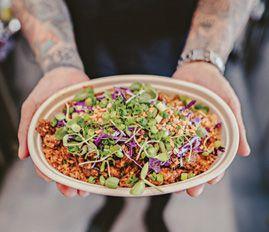
“The farm is right in [ Toledo, Ohio’s] central business district,” says Balance Grille co-founder Prakash Karamchandani. “We went into a strip of retail that was essentially abandoned in the heart of our downtown area. By putting in a farm and a restaurant, we were able to revitalize an entire city block.”
Balance Grille’s menu includes bubble teas and veg-heavy snacks, but is anchored by customizable bowls and tacos, all of which rely heavily on produce. Balance Farms is able to help fill the brand’s need for fresh veg. The farm produces a variety of crops within a controlled-environment, aquaponic grow space, allowing the brand to source much of its greens, herbs, and other ingredients from its own farm.
In addition to providing a cost-friendly and environmentally-sustainable alternative to traditional soil growth methods, hydroponic, aquaponic, and other soilless farming techniques also have the potential to maximize farm space and crop yield. Balance Grill’s produce is grown in towers that use vertical space. These towers are housed indoors in a controlled environment, meaning that the temperature and conditions of the grow room are heavily controlled via software and LED grow lights, making pesticides unnecessary and weather conditions irrelevant.
Tower Gardens, an aeroponic grow tower system company owned by Juice Plus, offers a similarly space-efficient model to brands and consumers alike. Unlike a hydroponic system, which submerges plants in water, the aeroponic Tower Garden product is designed with a reservoir at its base that holds water and a nutrients mix. Working on a timer that can be automated or manually controlled by its owner, the tower periodically pumps the water and nutrients mix up to the top of the structure and then relies on gravity to allow the mixture to trickle down to the plants embedded throughout the tower. “You’re recycling the water and the nutrients constantly,” says David Henard, general manager of Global Tower Garden. “The tower uses 90 to 98 percent less water than growing in the soil and it will produce up to a 30 percent greater yield than traditional growing. And it’ll do all of this up to three times faster.” Henard says restaurants have worked with Tower Garden to create mini-farms composed of several towers, sometimes located inside of a concept. When an operator is interested in replacing some or all of their produce with aeroponically grown



























ingredients, Tower Garden coordinates with the brand to create a customized grow plan tailored to space concerns and specific, desired, produce ranging from kale to tomatoes to microgreens.
Henard cites the towers’ accelerated harvest times as a safeguard for restaurants against supply chain disruptions and ingredient shortages. Not only is produce grown on-site arguably fresher due to shorter lag times between harvest and serving, but inhouse, space-efficient grow models like Tower Gardens’ system also allow restaurants more control of what ingredients they serve, when they serve them, and how much those ingredients cost.
Still, there are limits to what soilless growth towers can accomplish. Since these farming methods are soilless, operators and farmers are only able to produce crops that grow above the soil line. Root vegetables such as potatoes or tree crops such as apples and oranges are not well-suited to vertical, water-based farming techniques.
But if a concept’s menus rely on abovethe-ground crops—think leafy greens, herbs, and fruiting and flowering plants like peppers and cucumbers—these growing methods could prove worth the investment. Case in point: Balance Grille launched Balance Farms in 2019, months before the pandemic struck and supply chain disruptions began to ripple through the industry. In spite of the challenges of the pandemic, though, Balance Grille has avoided some shortages by relying on Balance Farms for about 18 different crops. “The primary economic advantage here is that you’re able to get the exact same, consistent product year round at relatively the same price, which is unheard of in the realm of produce,” Karamchandani says.
Additionally, the farm helped reduce the concept’s spending on ingredients, even as food prices skyrocket, and provided an extra revenue stream. Balance Grille uses roughly 50 percent of the produce grown by Balance Farms in restaurants and sells surplus product to local consumers. With future units slated to open in new locations, Balance Grille plans to scale Balance Farms alongside its restaurant, leveraging the farm’s hardware and software, created by Balance Grille, to expand its farming operation. q
Introducing Dark Chocolate Barista Mini Chips in NEW 5LB. bags. Convenient and versatile, these mini chips deliver decadent chocolate flavor to your most delightful treats—steam with milk for a delicious hot mocha, blend in frappés for an extra chocolatey treat or create a magical topping for ice cream and beverages with just a little sprinkle.
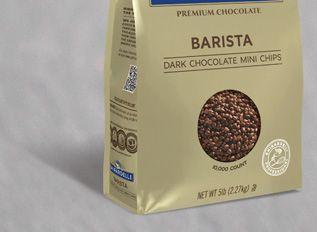

Order FREE samples at 800.877.9338 or professionalproducts@ghirardelli.com
MOCHA SALES WITH GHIRARDELLI ON THE MENU.

©2022 Ghirardelli Chocolate Company

adds. The cost of Servi, she says, is reasonable given the labor challenges afoot in the industry. “It’s expensive because she’s a piece of technology but if you break it down, she’s not expensive. She’s helping my team members do more things and not have as much stress.”
Keeping employees happy and not overwhelmed is key. The restaurant industry continues to suffer from an employee shortage, and according to The National Restaurant Association’s 2021 report, 77 percent of quickserve operations and 74 percent of fast casuals say they don’t have enough staff. At the same time, 78 percent of quick-serve operators and 68 percent of fast-casual chains say they expect technology and automation to help more with that this year. Servi has settled in nicely and Roxarzade even refers to it as a “she.”
“I think she’s cute,” Roxarzade says. “People say we should put an apron on her.”
Are the days numbered when it comes to blaming order mixups on human error?

It’s surely a thought surfacing of late for restaurants, which is something that’s sped lightyears during the pandemic. Robotics, in particular, have gone from fantasy to back-of-thehouse tool. And it’s only picking up.
Rachel’s Kitchen introduced the Servi robot in its Henderson, Nevada, location last December with the goal of providing an extra pair of hands for front-of-the-house employees.

“It’s been increasingly difficult to find staff,” says Debbie Roxarzade, founder and owner of the eight-location fast casual that’s headquartered in Las Vegas. “It’s tough, it’s exhausting, people are getting sick, we’re constantly being thrown things we need to do. So I thought if there’s anything I can do to help the team members, I want to do it.” Roxarzade leases Servi and pays an annual cost for an initial two to three years—all programming was done by a technician from Bear Robotics, the company that makes Servi.
“We were able to try her for a couple of weeks before we committed, but within a week everyone was saying she’s helpful,” Roxarzade
Servi has two primary uses: Employees load her up with food and plug in a table number. She then delivers that food and engages in some light chit-chat with customers, along the lines of, “Have a nice day.” Servers can also take Servi along when they bus tables, loading her with dirty dishes and sending her back to the dishroom. Customers receive their food faster thanks to Servi, Roxarzade points out, and it also gives the servers more time to interact with customers and provide a hospitality touch.
Servi’s a big hit with customers, especially children. “People are taking videos and pictures,” says Roxarzade, adding during COVID there’s another advantage of having a robot—some customers are not yet quite comfortable with human interaction.
BurgerFi debuted Patty the Robot at the end of 2020 at a location in Jupiter, Florida. Patty has the same responsibilities as Servi: bring food to tables and bussing.
“Patty is not intended to replace folks; it’s an augmentation of our staff and an extra pair of hands,” says Karl Goodhew, chief technology officer for the company, which has 116 domestic stores. “She allows our staff to add value, spending more time explaining our food.” Currently, staff members punch in a table number to send Patty there with food. However, BurgerFi






includes many components outside of a restaurant’s control: delivery apps and drivers, traffic, weather, and more.
There are three non-negotiables any restaurateur must adhere to in order to achieve success with delivery-only menus, however, and these are the mantras we try to ensure our restaurant partners have instilled into their businesses.

It is important restaurants have a commitment to their delivery-only menu, and it isn’t just a side business. Delivery-only differs from onpremises dining in so many respects—and it takes a true commitment to do it right. First, food concepts need to be designed for the offpremises space. You’ll need to optimize your brick-and-mortar menu to work as deliveryonly items. You also have the option to create brand-new menu items not associated with your dining room menu.
It’s clear to see from the mounting evidence—in the forms of research, news articles, podcasts, and personal experience—restaurant delivery-only menus are here to stay. I predict everyone in the sector is going to have an off-premises strategy, if not now, then in the next couple of years. And delivery-only isn’t limited to mom-and-pops or casual restaurants: some of the best concepts in the world are offering off-premises food for delivery, and many others are moving in that direction.
That said, we’re still in “wild west” times. We have to be real about that. The delivery-only ecosystem is evolving quickly, and those in the business are still trying to figure out how to optimize brands for this space.
As someone who has spent their career in the industry and who now works for Nextbite, a virtual restaurant company specializing in helping restaurants earn incremental revenue via delivery-only menus, I’ve had the opportunity to witness the trials, trends, and joys that are part of this ever-evolving business.
The one thing I can say with 100 percent certainty is it’s hard to do it right. Delivery-only is a particularly tricky beast, since it

You have to work with all the third-party marketplaces/apps that all operate slightly differently and have instituted specific rules around menus. DoorDash, for example, requires your online menu to have less than a 50 percent crossover with your brick-and-mortar offerings.

Be intentional with your virtual menu, and think “consumer/ daypart/occasion,” meaning if you have a great dinner business, but your kitchen is idle during breakfast, consider adding a breakfast menu item, such as a Huevorito, for delivery.
If you’re doing well with the 35- to 45-year-old crowd, but not the 16–24 demographic, think about designing a lunch concept that appeals to a younger age group. Nextbite recommends restaurants start with two to four menu items. Sometimes, you’ll need to drop items and replace them with others. It’s not a perfect science, and customers can be fickle, but as you try them out, you’ll learn which items capture a local audience looking for exactly what you’re offering.
Being consistently available means you’re paying equal and rapt attention to your customers’ on-premises and off-premises experiences. Your restaurant may have scores of online orders coming in via multiple devices, while at the same time







is working with Rich Tech Robotics, which developed Patty, to add RFID capabilities. This way, the employee simply puts a table topper number containing an RFID chip and Patty will read it and deliver food accurately. A representative from Rich Tech came out to this BurgerFi location initially, to set up Patty, and map out the restaurant to give it an initial awareness of where home and the tables are. Customers enjoy the novelty factor of interacting with Patty. When it delivers food, it thanks them for coming to BurgerFi and if people are in its way, it politely asks them to move. “There are different speech texts we can put in there,” Goodhew says. “It’s a little playful and some customers are coming in just to see Patty, especially if they’ve got kids.”
Carlos Gazitua is using Servi robots in six of his full-service restaurants in the Sergio’s chain and, like other operators, has been struggling to find staff during the pandemic. The introduction of the robots was so successful he’s now considering implementing them in his two fast-casual restaurants, Sergio’s Cuban.

“We keep the servers rocking out getting the tables and doing the hospitality and it has made a major impact for our guests,” the chief executive says.
CL50 ULTRA MORE PRODUCTIVITY!

Gazitua leases the robots for about $1,000 per month each. “At first, the servers were a bit nervous because they didn’t understand if it would work, but after two hours they loved it because they don’t have to be running back and forth. They now have more time with the guest and can pick up more tables.”
He’s even added a second robot in two of his restaurants, and says one had to assume a more dominant personality so the robots know which goes first in a narrow hallway or between guests.
Gazitua charges the robots overnight and between shifts. Although Gazitua has been in business for 45 years, his locations are now known as the “robot restaurants” by local children. Due to this appeal, he’s looking to add more phrases to the robots to increase their interaction, which might include singing happy birthday, speaking Spanish, and celebrity voices. q
juggling a dining room full of patrons changing their minds, sending dishes back, and arguing over the bill. During that sort of rush, don’t turn off your delivery-only menus, or you’ll diminish your reputation with potential customers.
You need to walk and chew gum to seamlessly handle both sides of the equation and make sure overall customer satisfaction—in store or out—is a priority.


Today’s consumers are hyper-specific about what they want to eat. The days of ordering a pizza to share with friends are long gone. Now, it might be eight teenagers in one home on a Friday night ordering eight vastly different food items via multiple delivery apps. But they all demand quality, so you need to treat your delivery-only customers with the same high level of service and quality food as your on-premises guests.
And never gloss over the importance of forging good relationships with delivery drivers.
These are the people who often get relegated to an unseen area near the back of your kitchen and must wait around for deliveries to be ready.
Smart restaurateurs are now building waiting rooms with couches with free sodas available for drivers while they wait, encouraging them to accept delivery orders from their restaurant.
Today’s restaurant industry is a multifaceted and complicated business and will only continue to become more so. Embrace your new delivery-only customers, and be prepared to meet their needs as they become more savvy and particular about the quality, presentation, and variety of food they order and pay extra to have delivered.
The good news is, if you provide for a great off-premises dining experience, they will return and, importantly, spread the word to their friends. By sticking to these three rules, you can be prepared for the next revolution in the industry and set yourself up to win in the delivery-only business. q








fee chains in the U.S., off-premises has become king, especially since COVID swept through the country. In Starbucks’ first quarter, mobile order and pay, drivethru, and delivery comprised more than 70 percent of sales, and drive-thru experienced its fourth consecutive period of double-digit comps growth. The same is true for the roughly 540-unit Dutch Bros, which saw digital mix more than 60 percent in the first quarter. The same isn’t true for Southern Grounds, and Janasik doesn’t want it to be. The concept doesn’t have any relationship with third-party delivery providers; sometimes they sneak into the system, which he is still unhappy about. As for customers who may be on their way to work and opt for to-go, he estimated that to be about 10 percent and rising.
However, he doesn’t attribute the increase in takeout to a change in consumer preference. Instead, Janasik believes it’s a condition of space. “I mean our Neptune beach cafe has 200 seats, Avondale has 60 and the other one 190, and we’re full all the time,” he says. “… One of our slogans or taglines is ‘gather together,’ and the whole purpose is to steer away from the quick, fast-food inability to sit down and enjoy.”
“We want to have a comfortable, very strong culture in our environment where people do feel comfortable gathering together, whether it be personal, professional business, whatever the scenario event is, we just want it to be a very comfortable third place,” he adds.
From the beginning, franchising was part of the overall vision, but Janasik and his self-described conservative leadership team wanted to ensure all resources and processes were in place to support potential operators. Southern Grounds built a training program in which individuals spend a certain number of weeks working on each station, and those internal hires lead training programs for everyone else. The brand also simplified its menu. “Our stores are really high volume, obviously a proven system with great profitability, but we needed those processes written down,” Janasik says. “That’s two, three years to understand what we do and why it works.”
The emerging fast casual is targeting 12 Southeastern states for growth—Florida, Georgia, North Carolina, South Carolina, Louisiana, Tennessee, Virginia, Texas,
Alabama, Kentucky, Maryland, and Mississippi. In anticipation of this expansion, Southern Grounds established direct trade relationships with farmers and arranged for their produce to be delivered through Sysco.
“Quality becomes the new frontier. We believe the coffee market is far from saturated, but is actually evolving into something different, something more focused, something better,” Janasik says. “And the consumer base is now demanding higher quality offerings, food or beverage, in our opinion.” In February, the coffeehouse announced the signing of its first franchise agreement with SOGRO St. Pete Hospitality Group. The company, run by Jordan Hooten, Zach Presti, and Nick Presti, plans to open nine stores in the next three years throughout Tampa Bay and St. Petersburg. Southern Grounds also aims to continue its multi-unit relationship with HMSHost as opportunities arise at other airports. After opening one outlet in Jacksonville International Airport Terminal A, the brand subsequently signed on for a second unit that’s pre-TSA. In addition to franchise and licensing deals, the brand will grow its corporate footprint in North Florida (downtown Jacksonville, St. Augustine, Fernandina Beach/ Amelia Island) and further south in Palm Beach. The fast casual has four store designs ranging from 2,500 to 6,000 square feet, the latter including an outdoor landscaped patio. Janasik prefers walkable trade areas and dense neighborhoods. Among the three traditional stores, the Neptune Beach unit is located in a boutique shopping mall a few blocks away from the ocean, another is based in a strip in a historic part of Avondale, and the third location is a standalone in a historic part of San Marco.
As SOGRO St. Pete Hospitality Group grows, Southern Grounds will look to do more franchising concentrically from Jacksonville, such as Orlando and Naples in Florida, and then Atlanta and Nashville.
The company recognizes that some of its decisions aren’t typical to the coffee industry, says Lindsay Blakeslee, director of franchise sales. But it’s not as if the group is intentionally trying to go against the grain—it’s just transforming into a restaurant segment that doesn’t exist at scale. q
service restaurant is: you’re doing the same thing over and over again. But you have to be very efficient in your movements. You have to really stick to the plan if you want to push out 500 sandwiches in two hours. You have to help people stick to that plan because if people start just doing their own thing, it’s a nightmare.”
Graham says Miller’s wants to focus on a strong chain of quality franchisees and emphasize the presence of local owners to their respective communities. The brand digitized its operations manual with a system called Jolt to stay current.
For more than 30 years, Caribou Coffee, which is also now getting into franchising, thrived in the Midwest with growing national recognition and expansion, including the 2019 rollout of the “Caribou Cabin” prototype, a smaller, 600-square foot walkup/drive thru model, which Caribou president and CEO John Butcher says is “designed to offer speed and convenience without sacrificing quality and service.”
Like H&H and Miller’s, Caribou is focusing on quality over quantity. Unlike the others, though, it has international franchising experience with 261 Caribou Coffees in nine countries as of December 28, 2021. While Caribou will expand with both its Coffee and Cabin locations, the latter will play a big role in growth.
“Over the past two decades, Caribou Coffee has invested in our digital and omnichannel leadership and established robust CPG and non-traditional license businesses,” Butcher says. “As a result, despite our company-owned stores being largely based in the Midwest, our CPG and omnichannel operations have translated to Caribou’s presence throughout all 50 states.” Additionally, Caribou has support with “Panera Breads,” a conglomerate formed in August that includes Panera Bread and Einstein Bros. “Panera Brands has an incredible franchisee program,” Butcher says. Caribou closed its first multiunit deal in Ohio in March 2021.
“Developing a franchise business is a whole separate business,” Graham adds. “You can be a good restaurant operator but have no idea what to do when you develop a franchise brand. They’re two separate businesses.” q
For
AD INDEX

Accurate Box ........................................83 973-345-2000 | accuratebox.com
Acrelec ................................................65 877-334-9737 | acrelec.com/drive-thru
Anchor Packaging ...........................18, 19 anchorpac.com
Belgioioso ...........................................41 833-476-5596 | www.belgioioso.com/contact-us
Bid Vita ..........................................20, 21 bidvita.com
Botrista ...............................................47 Botrista.io | sales@botrista.io
Cattlemen’s ..........................................11 855-552-9797 www.McCormickForChefs.com/Cattlemens
Cholula ................................................14 866-972-6879 | www.cholula.com
Clark Foodservice ................................49 clarknationalaccounts.com
Coca Cola .....................Inside Front Cover 800-241-COKE
Crust Pizza ...........................................61 850-333-8260 | www.crustfranchise.com
Ecolab ....................................Back Cover 800-529-5458 ecolab.com/offerings/kay-machine-warewashing-qsr
Ecotrak ................................................35 888-219-0000 | ecotrak.com
Envysion ..........................................12, 13 877-258-9441 | envysion.com
FIFO Bottle ..........................................67 800-453-3436 | fifoinnovations.com
FLAT Technologies ...............................45 855-999-3528 | FlatTech.com

Gecko Hospitality .................................94 239-690-7006 | GeckoHospitality.com
Ghirardelli ...........................................95 800-877-9338 | ghirardelli.com
Global Display .....................................97 815-282-2328 | go.gds.com/midas-aria
Hatco ...................................................57 888-8140028 | hatcocorp.com
Hellometer ..........................................91 hellometer.io/20
HME ..............................................28, 29

858-535-6000 | hme.com/timers
Intellihot .............................................73 866-447-0209 | intellihot.com
Lightspeed ..........................................91 866-932-1801 | www.lightspeedhq.com
Loomis U.S. ..................................24, 25 713-435-6700 opt.2 | www.loomis.us
McCormick McCulinary .........................23 855-552-9797 McCormickForChefs.com/McCormick-Culinary
Melitron ..............................................77 888-666-4309 | melitron.com/smart-drive-thru
Mike’s Hot Honey .................................39 212-655-0574 | mikeshothoney.com/sample
Mother Parkers ......................................7 905-279-9100 | Mother-Parkers.com
National Honey Board ............................8 303-776-2337 | Honey.com
NorthAmerican Bancard ......................101 866-481-4604 | NYNAB.com
Red Gold ..............................................17 866-729-7187 | RedGoldFoodservice.com
Restaurant Technologies, Inc. ..............75 888-796-4997 | rti-inc.com

RF Technologies .........................2, 5, 103 800-598-2370 | rfdrivethru.com


Robot Coupe ......................................100 800-824-1646 | robot-coupe.com
Simplot ...............................................37 800-572-7783 | simplotfoods.com
Steak n’ Shake .....................................69 steaknshakefranchise.com
The Howard Company ..........................79 800-782-6222 | howardcompany.com
The Toasted Yolk .................................61 www.thetoastedyolk.com
Van Drunen Farms ................................53 815-472-3100 | vandrunenfarms.com
Vitamix ..........................................30, 31 800-437-4654 | vitamix.com/ourdifference
Vito Fryfilter .......................................93 847-859-0398 | vitofryfilter.com
Welbilt ................................................63 800-424-2411 | garlandgroup.com
Worcester Industrial Products ..............81 800-533-5711 | Shortening-Shuttle.com
Xenial ..................................................55 855-936-4251 | xenial.com/solutions/drive-thru
SPONSORED CONTENT
Adopt a Highway Maintenance Corporation .......................................88 Adoptahighway.com
ChargeNet Stations ............................89 619-841-9869 | chargenetstations.com/franchisees
Dallas Group ................................86, 87 800-367-4188 | magnesol.com

DSA Signage ......................................86 866-333-0670 | dsasignage.com
FreshFry ............................................88 502-996-8914 | FreshFry.me
Happy Valley Farms ...........................88 949-975-9900 | ggf-usa.com
PDI ...................................................90 866-429-2372 | pdisoftware.com/qsr-industry
Rytec Doors .......................................88 888-467-9832 | rytecdoors.com

Vandemoortele .................................90 banquetdor.com/en
www.qsrmagazine.com | QSR | MAY 2022 103




What was your first job?
My first job was at a Donatos on the east side of Columbus, answering phones and helping to cash out customers at the registers.
What’s your favorite menu item at Donatos?




My favorite menu item is the Big Don Italian Sub
What’s your favorite cuisine aside from Donatos? Outside of Donatos, I love to try new restaurants and get a bit adventurous. At home, I like to experiment with new ingredients and my recent favorite is bruschetta chicken pasta.
Who inspires you as a leader? Doing what’s right instead of what’s easy is a true sign of love and integrity and the most important characteristic of a brave leader. Ruth Bader Ginsberg once said, “Whatever you choose to do, leave tracks. That means don’t do it just for yourself. You will want to leave the world a little better for your having lived.”
What’s the best piece of advice that other restaurant executives should hear? Don’t lose your connection to those who are closest to your employees and customers. Your restaurant managers are passionate, driven, and incredibly smart. You will get much further by listening to your employees.







What are some of your interests outside of work?

I am energized and recharged by spending time with my family. We love to go boating and spend time on the lake during the summer and sit by the fire in the colder months.
Being born and raised in Columbus, Ohio, hometown Donatos Pizza was always a family favorite on Friday nights. In fact, Donatos quickly became a family affair as I was growing up when my two oldest brothers started their careers with the company as general managers delivering the best pizzas. At age 15, I followed in their footsteps and took on my first job at Donatos, and I have been with the company ever since. My heart has always been in restaurant operations and as I grew my career, I had an opportunity to work in many different roles including general manager and district manager.
In 2016, I realized that my true passion was on the people side of the business, and I transitioned to the people services department in the home office as the manager of people and culture. In 2019, I was excited to take on a new role as vice president of people services. I have had so many mentors throughout my career and am so thankful for the opportunities that Donatos has allowed me. Throughout the last 20 years, Donatos has
seen tremendous growth and it has been fun to be a part of the journey. Our growth is happening in several ways, which is really exciting for our brand. We currently have 169 traditional restaurant locations with plans to open more in 2022 with both new and existing franchise partners. We’re also thrilled to have a partnership with Red Robin where our pizza is now made and served in nearly 200 of their locations, and we look forward to adding more of their restaurants to that total this year. Another way we are growing is through REEF Kitchens, who use third-party delivery. All in all, our pizza is now served in over 375 locations in 22 states coast-to-coast.
In my time at Donatos, I have realized that there is something truly magical about working in a family-owned company where our team is encouraged and celebrated for being their authentic selves. There are so many career stories just like mine and I am in awe of the truly unlimited opportunities that the restaurant industry and Donatos, in particular, offers. q




